
The Illusion of Perfect Mothering
How Society’s Expectations Affect Women
An MFA Thesis Project by Victoria Del Valle
Problem Statement:
All mothers, but specifically those categorized by vocation such as working mothers, stay-at-home mothers, and student mothers, struggle with the social comparison of idealized mothering presented within the culture; leading to difficulty balancing society’s perspective of a mother’s responsibilities with their own needs, wants, and expectations.
Abstract
This research seeks to investigate the societal stigmas and misconceptions of ideal motherhood, aka “intensive mothering,” the repercussions associated, and the support systems both in place or missing. In addition, it seeks to contribute to fostering a healthier societal perception of motherhood. Methods include a literature review of existing research, case studies and analyses of other artists’ contemporary work in the field, and a visual solution in the form of an art exhibition. This research found that intensive mothering is a pervasive idea, ingrained in current society and detrimental to mothers’ mental health and well-being. Through the research and visual solution, it is shown that mothers are not alone in the struggles they go through, even across disparate mothering vocations such as working mothers, stay-at-home mothers, and student mothers, and that bringing together these various groups is essential to foster a healthier societal perception of motherhood and support systems for women.
Feel free to download my Thesis Documentation here:
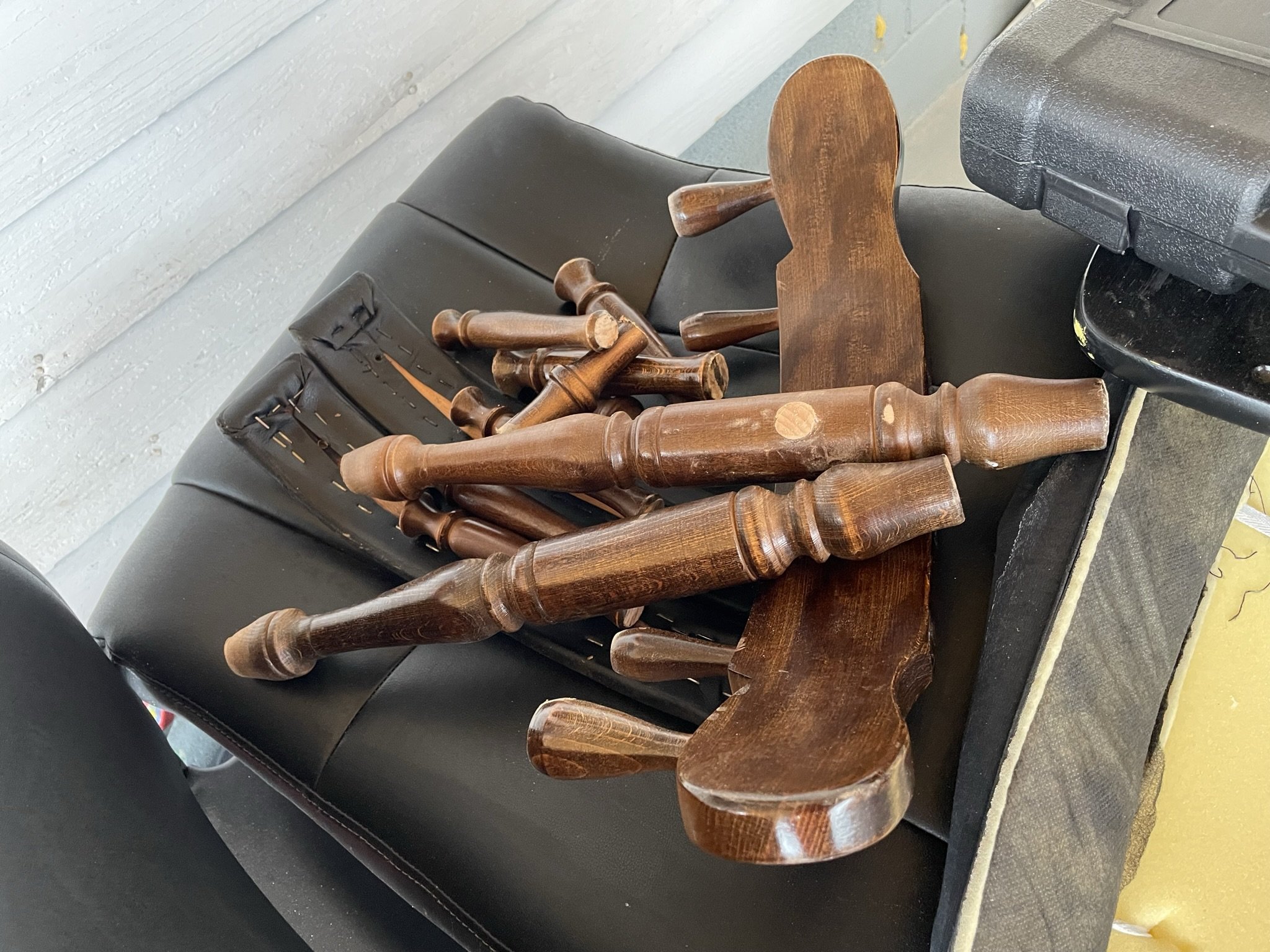
Visual Process
Chair Sculptures
The creation of the chair sculptures began with conceptualization aided by word clouds derived from extensive research findings. These word clouds served as quick references for the themes associated with each mothering group, guiding the intended communication of each sculpture. Each chair started as an existing piece, meticulously altered to convey specific narratives. Some, like the representation of Stay-at-Home Mothers, required complete disassembly and the addition of distinct elements. In contrast, the Ideal Mother representation involved the use of sewing to craft a cover for the chair. These alterations were purposefully tailored to effectively communicate the diverse struggles encountered by various mothering groups. Through meticulous disassembly, modification, and reconstruction, the sculptures authentically captured the complexities and societal pressures of motherhood, ensuring each piece served as a poignant visual testament to the shared experiences of mothers.
Chair Progress Pics




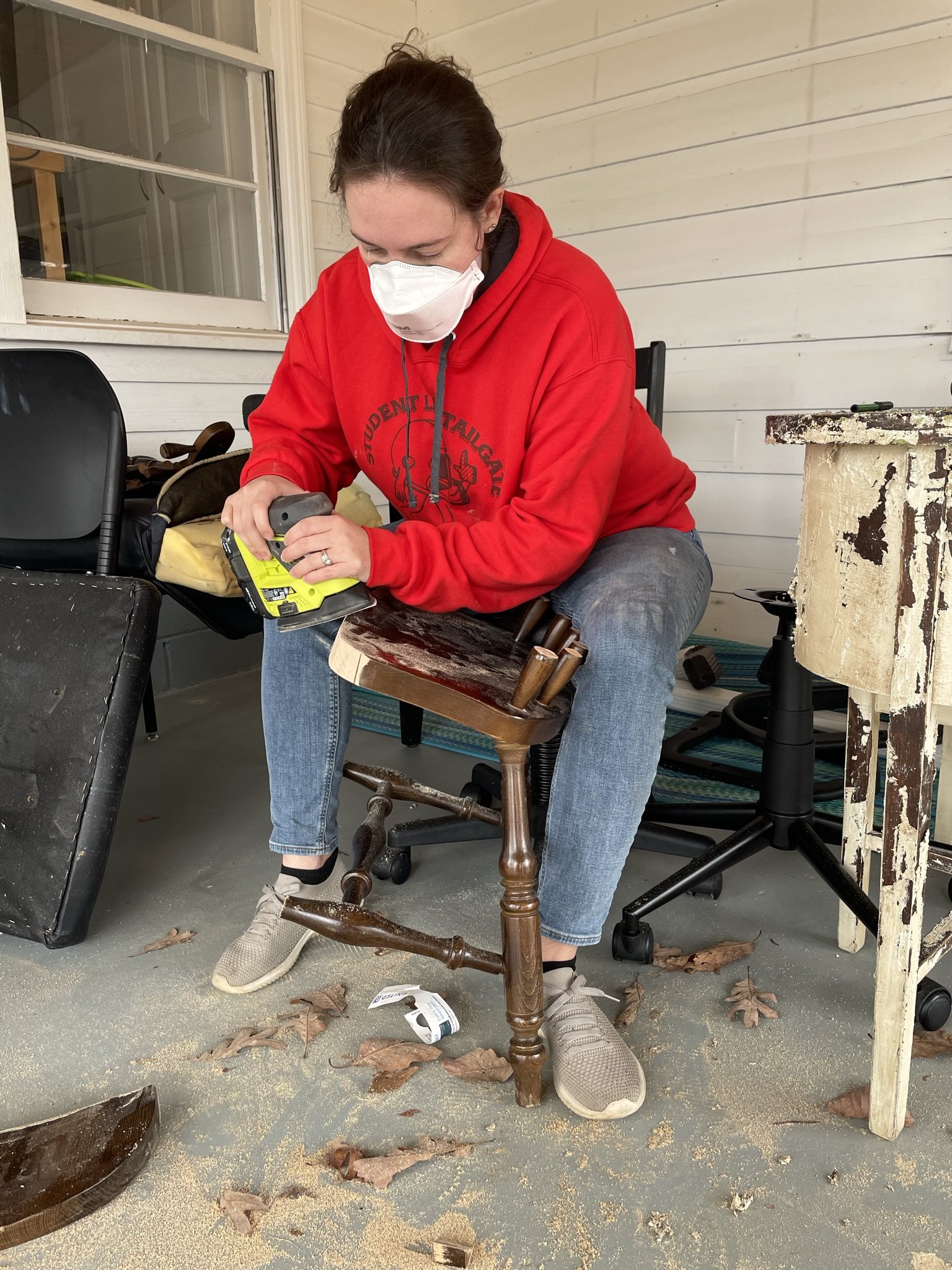



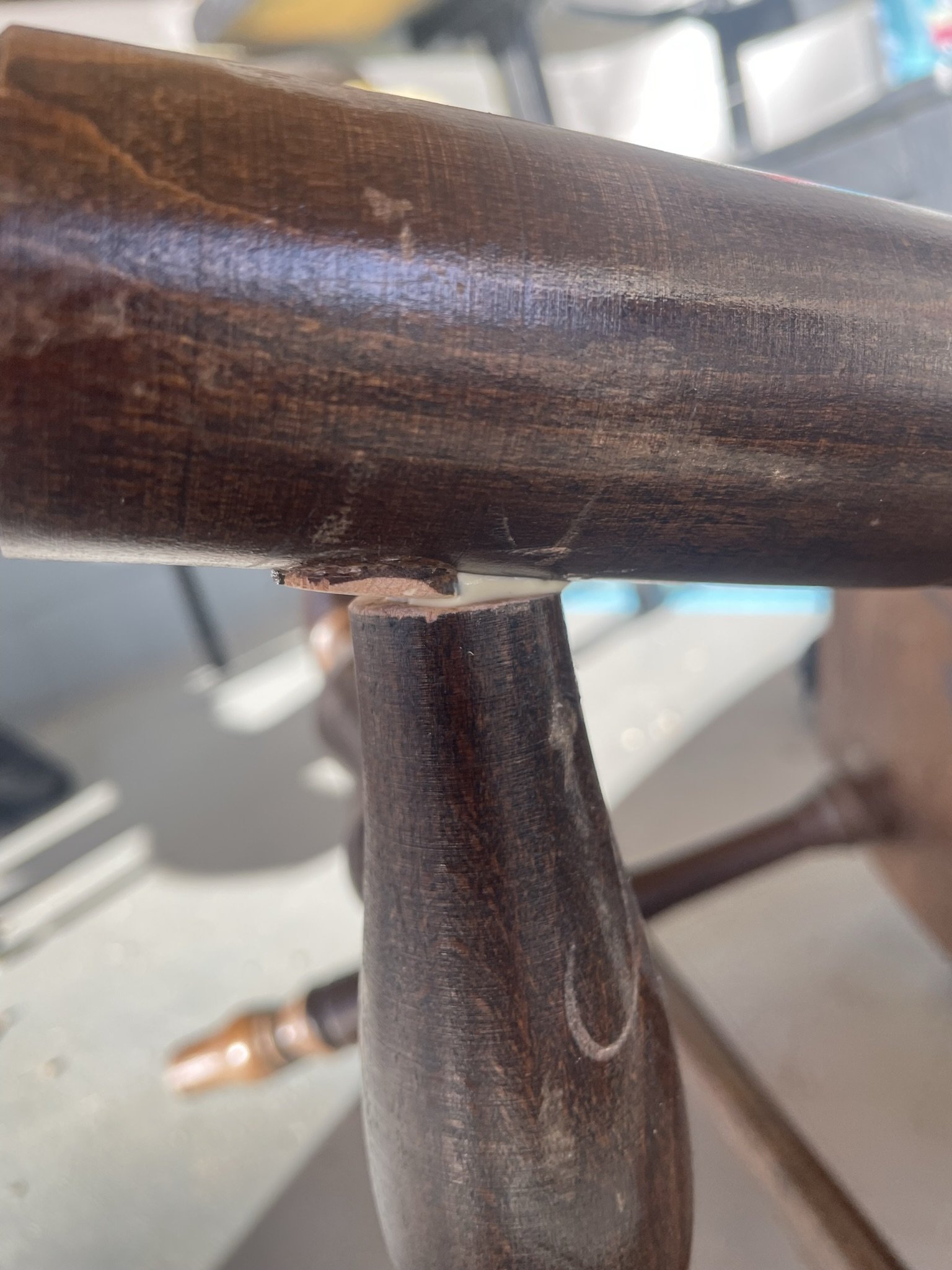
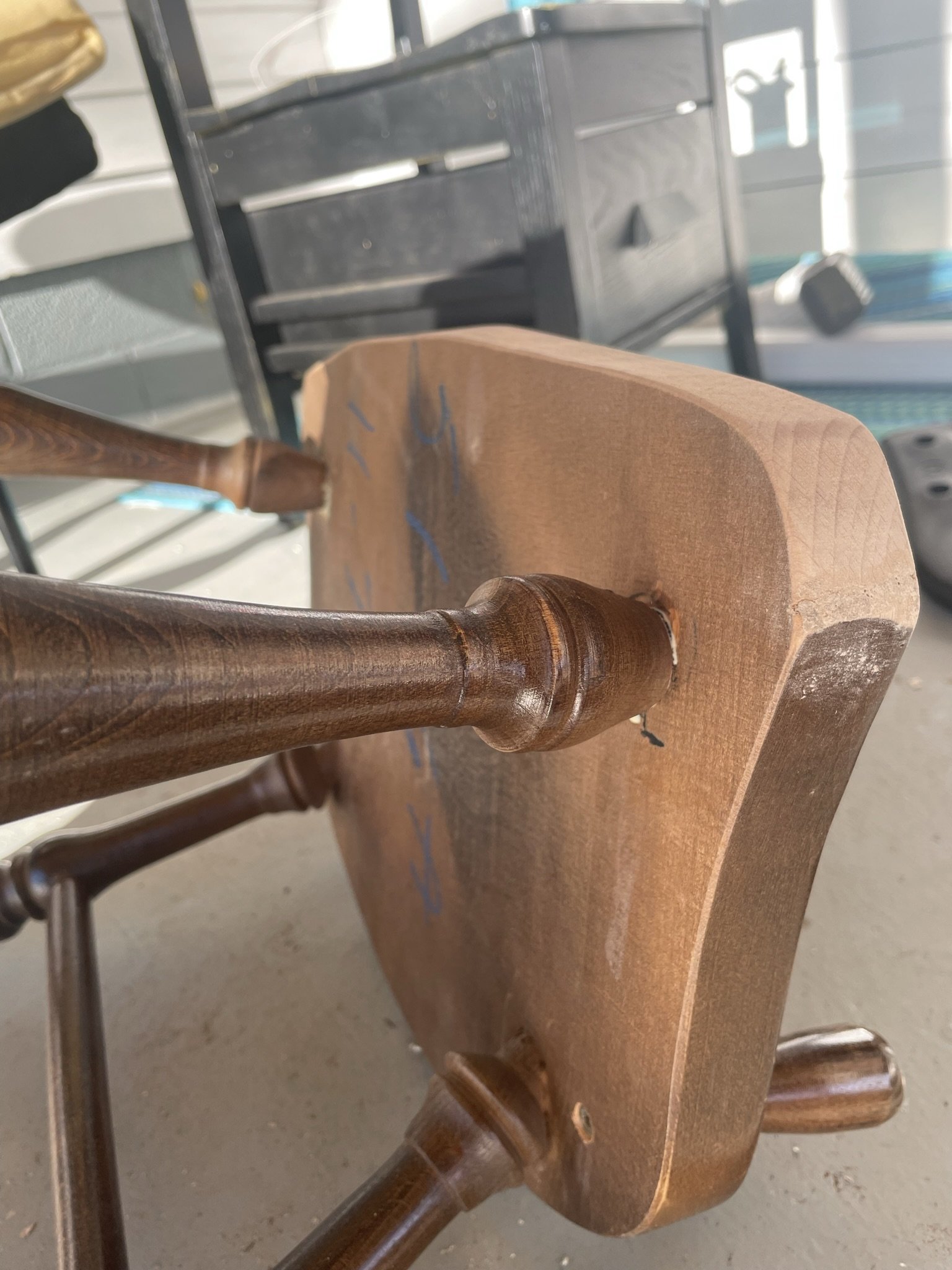




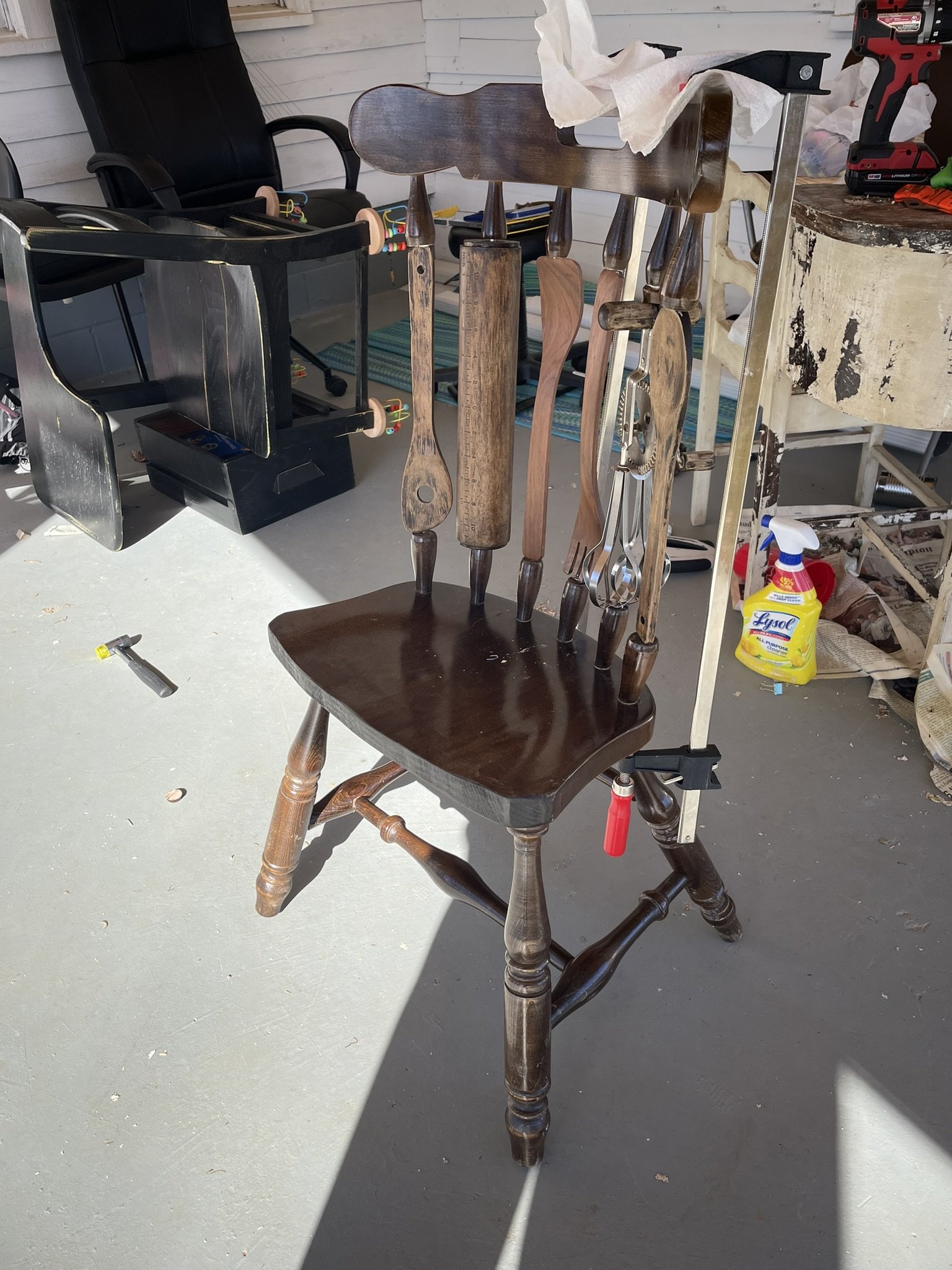

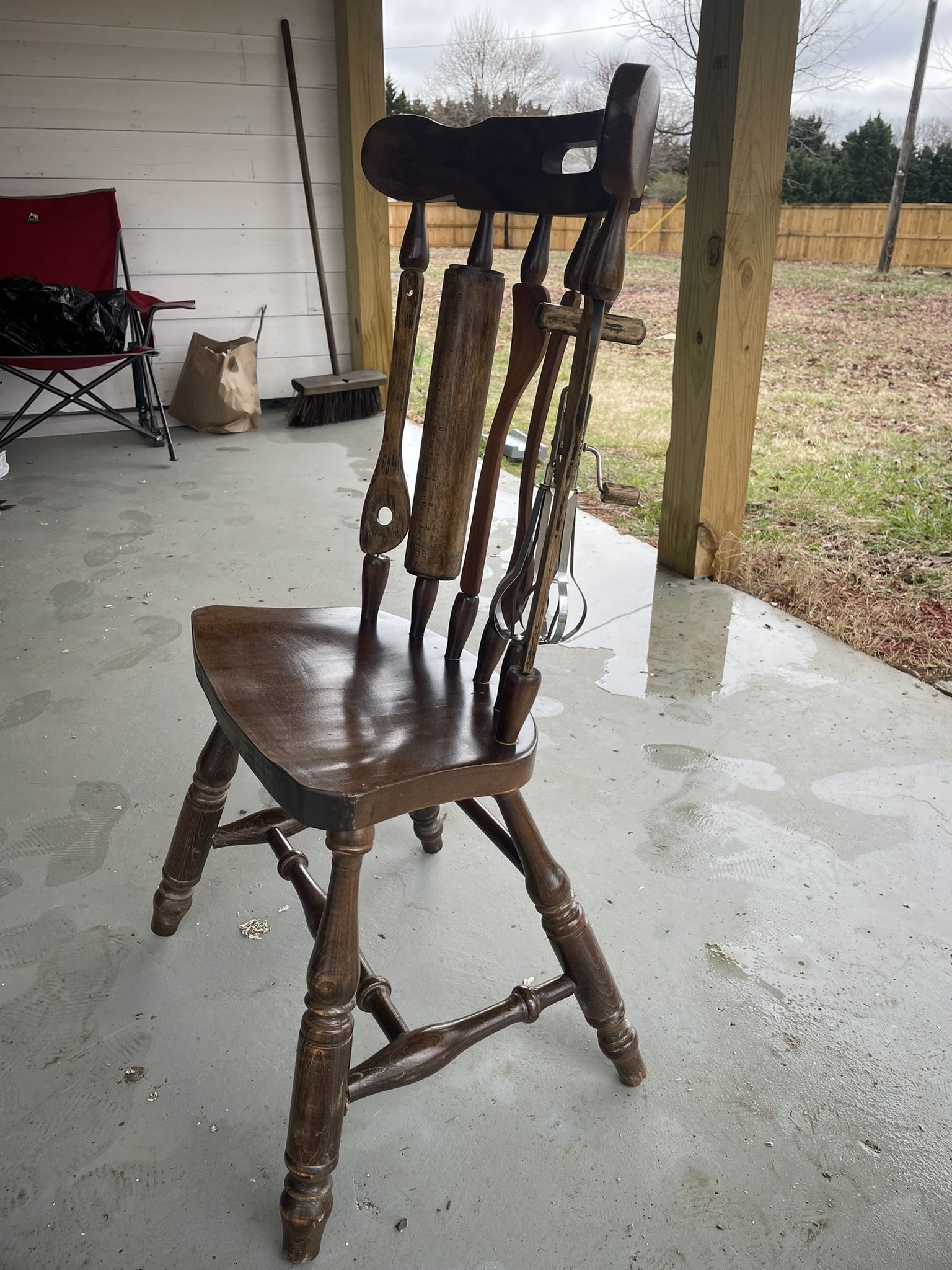


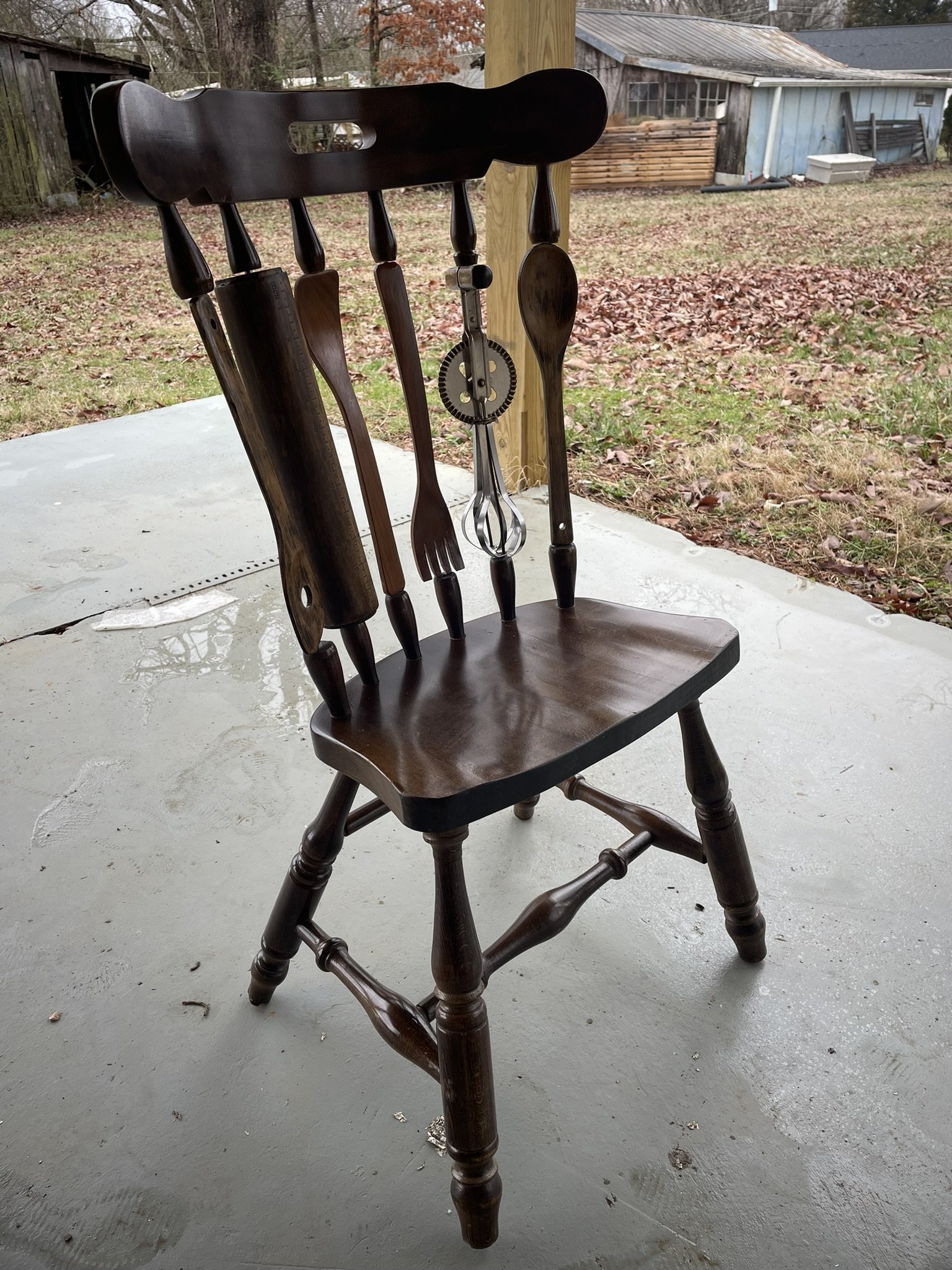






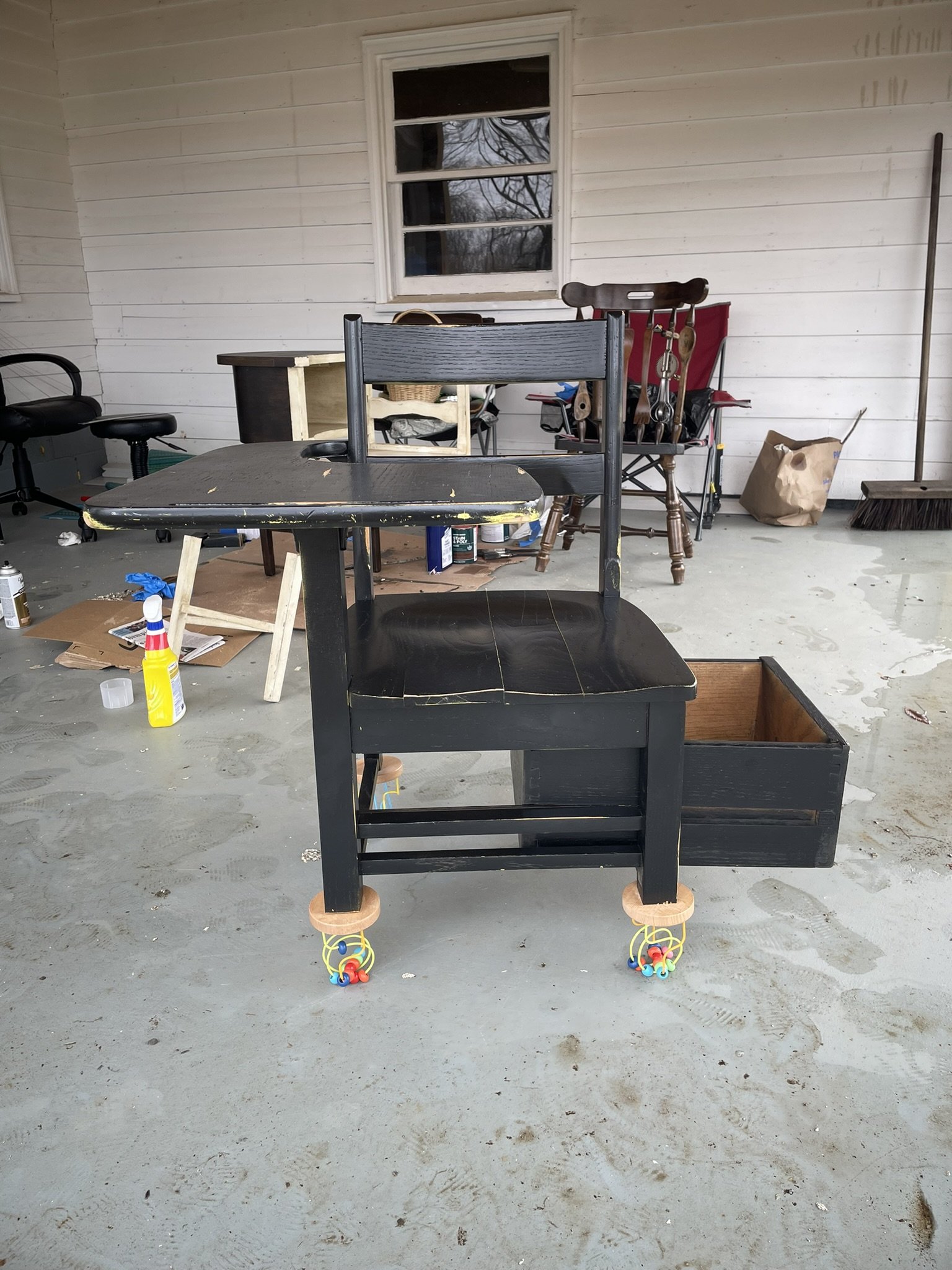








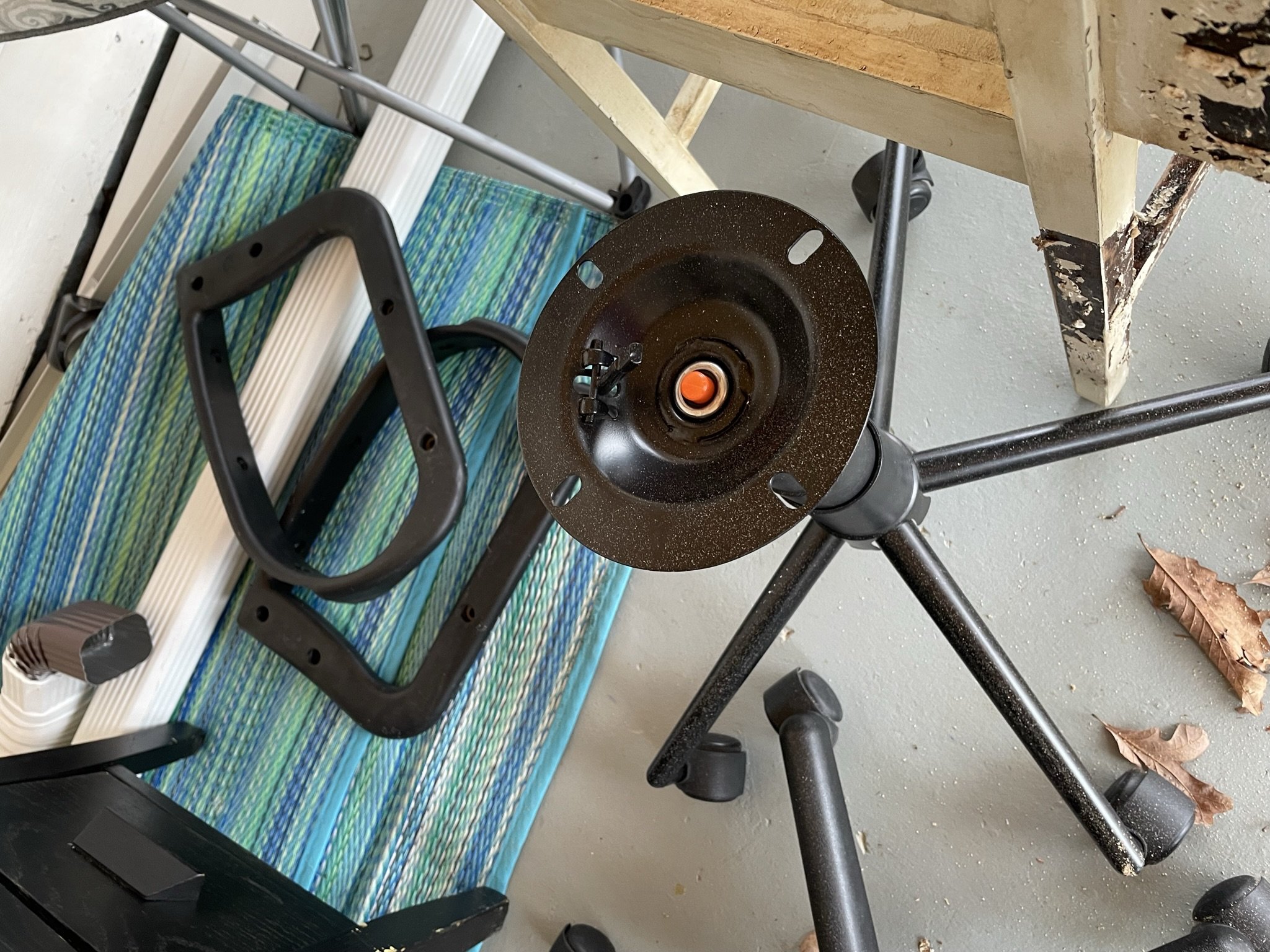

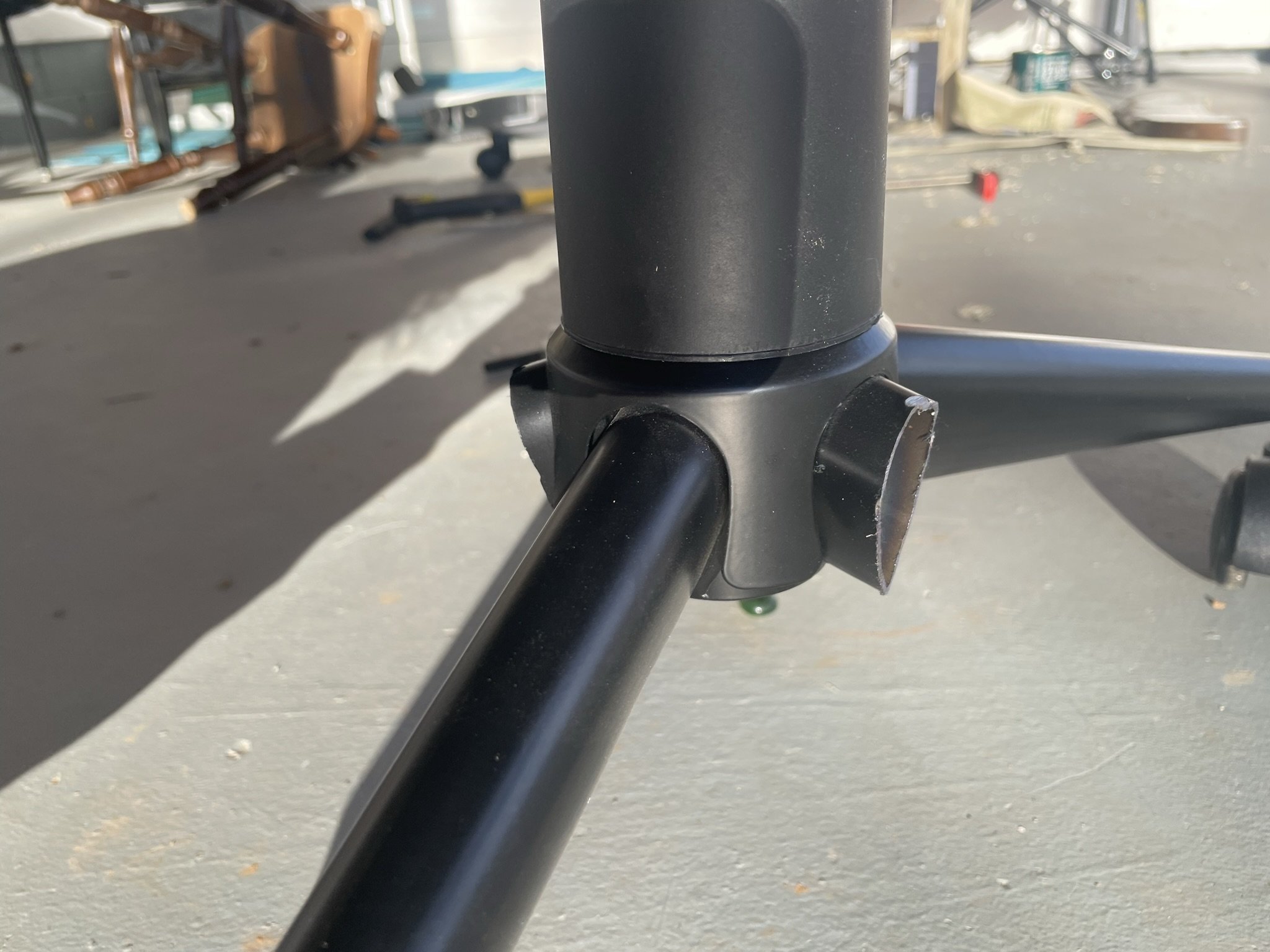
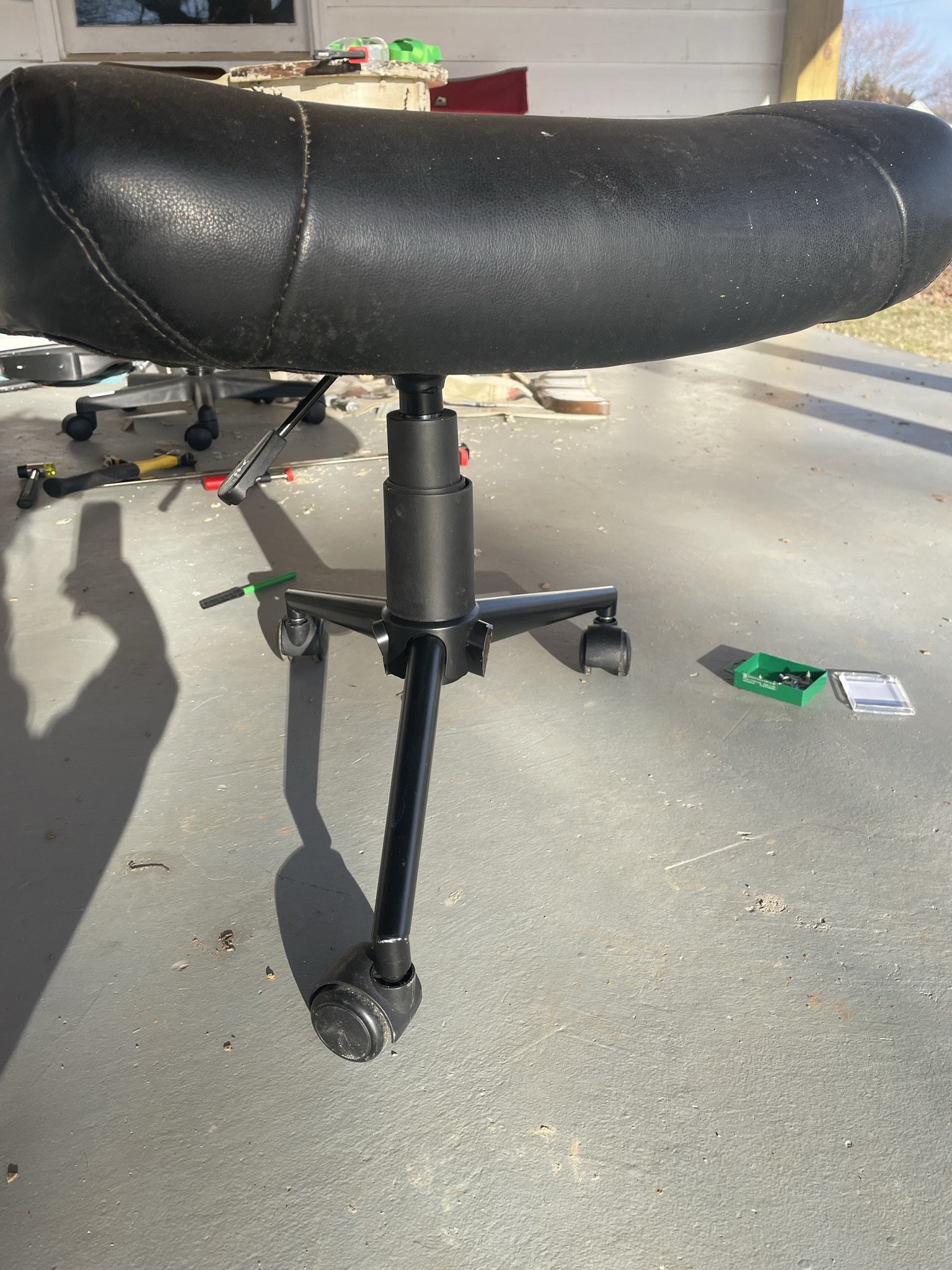

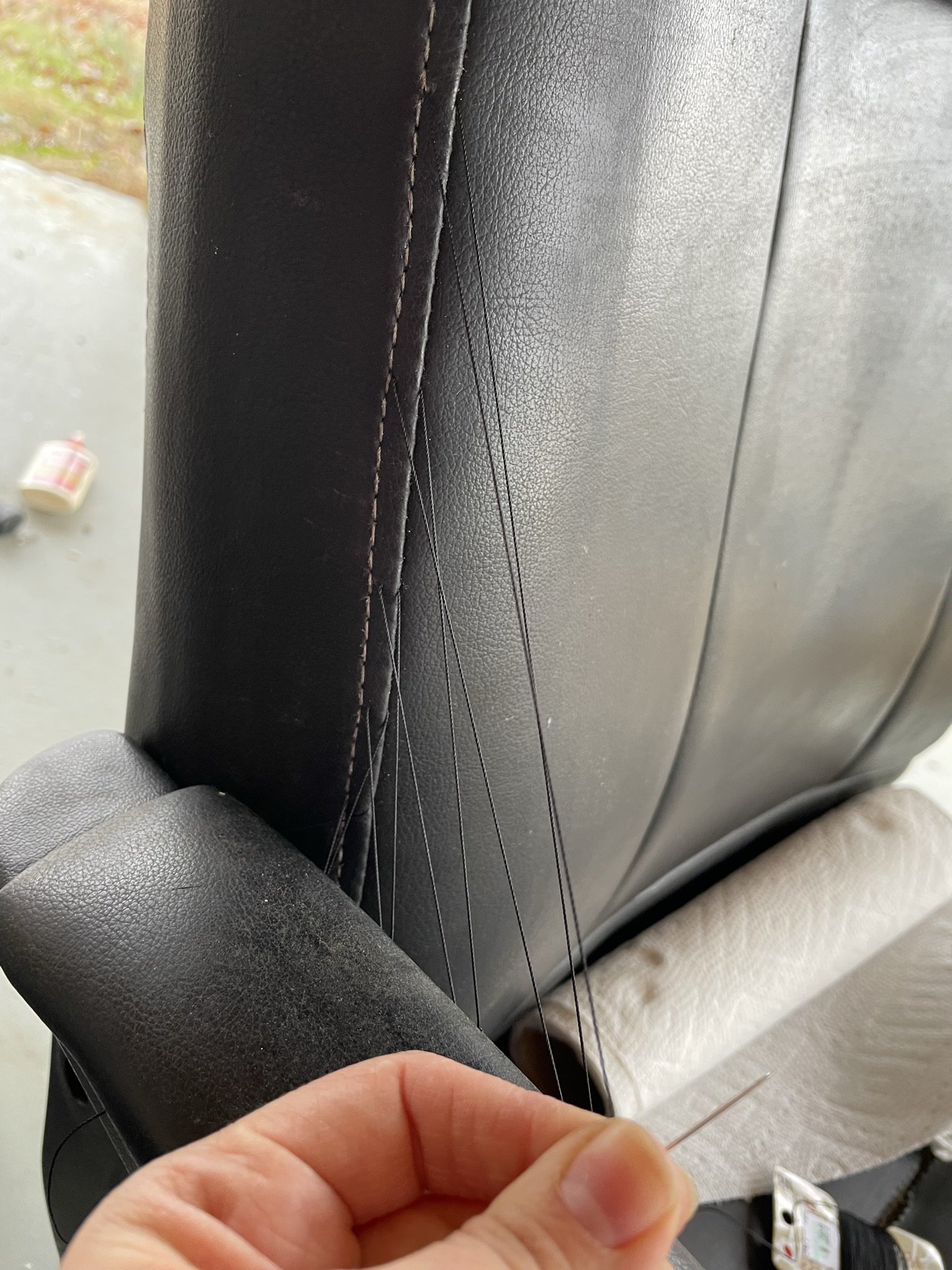

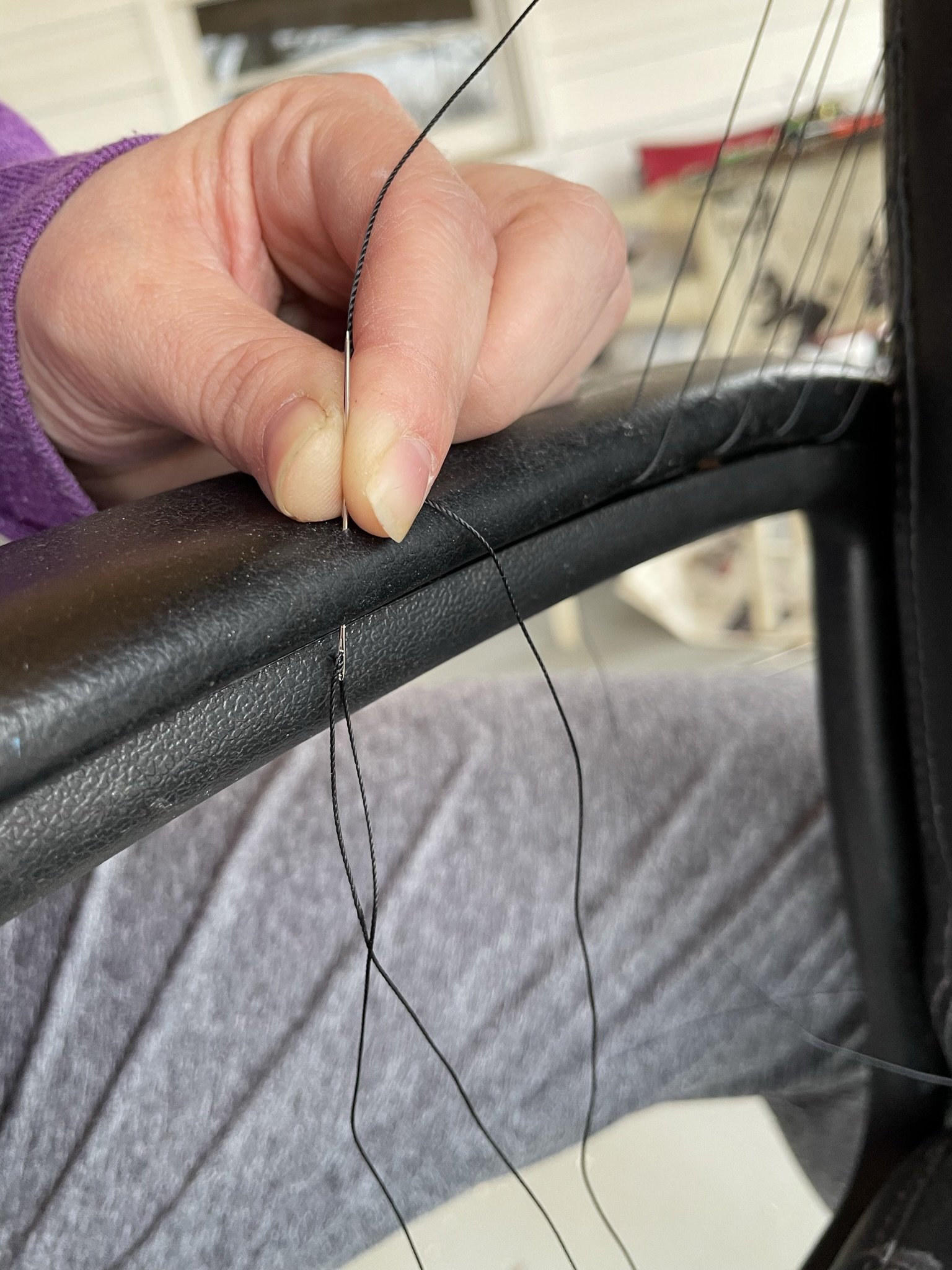


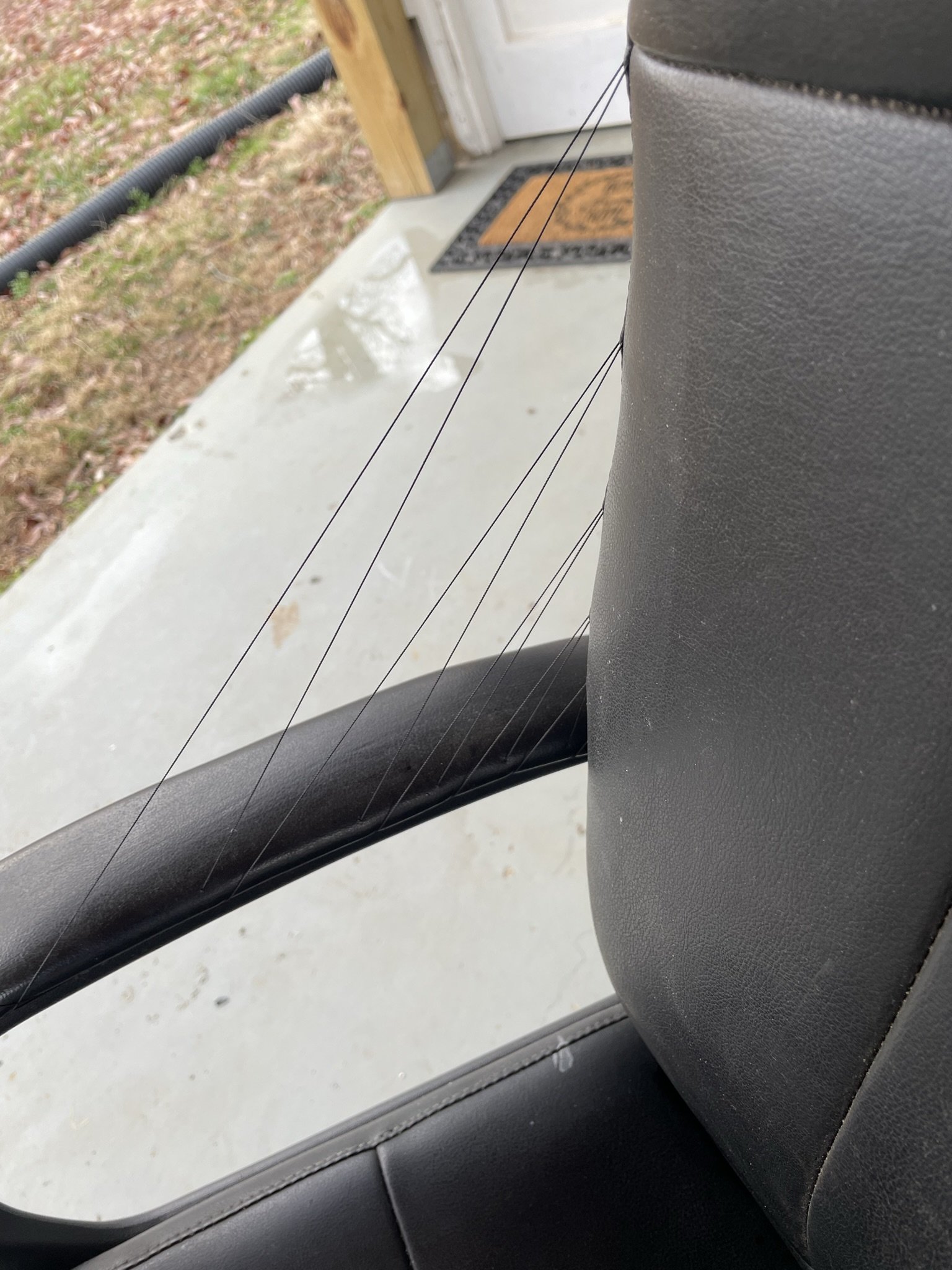


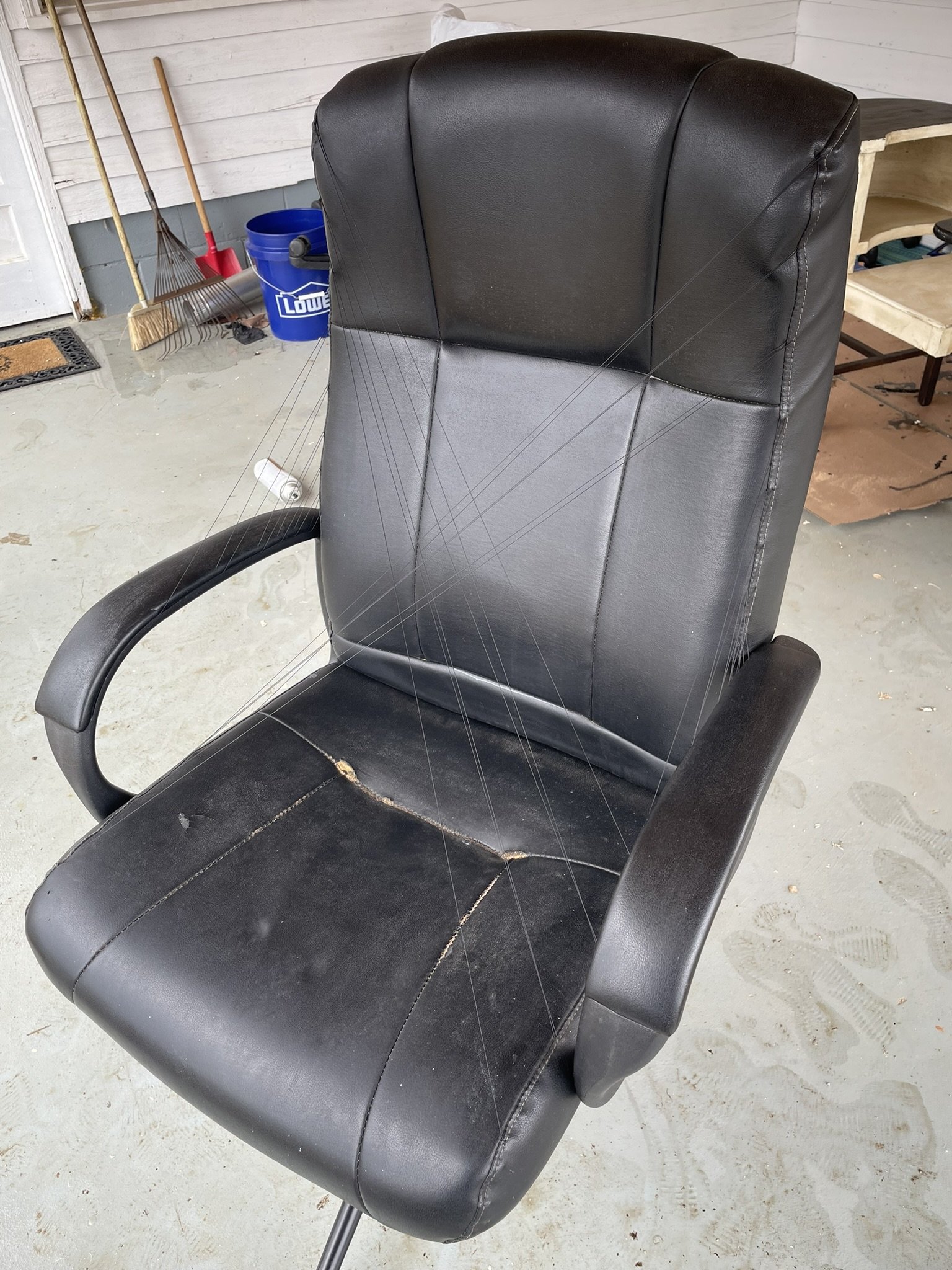










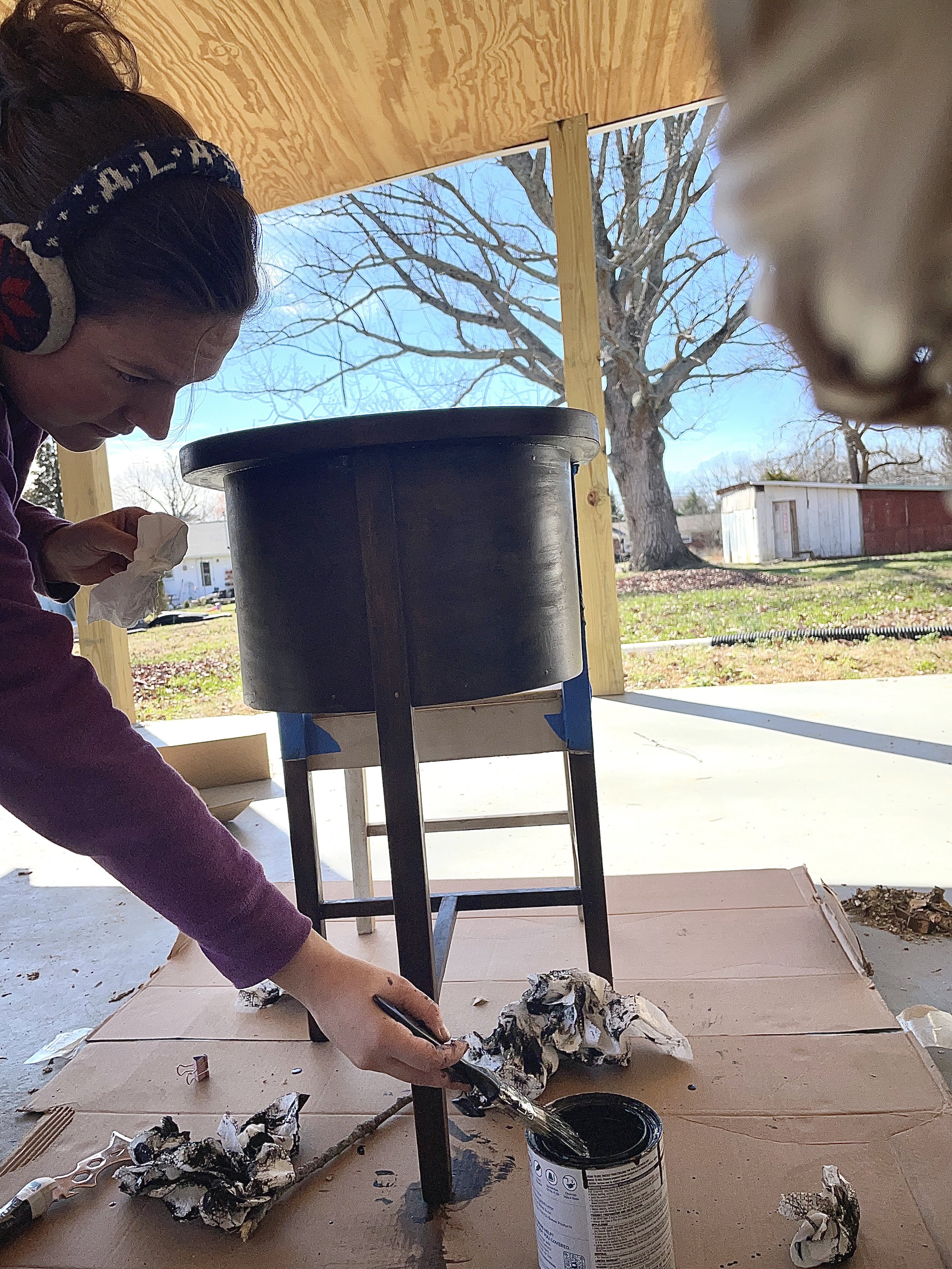

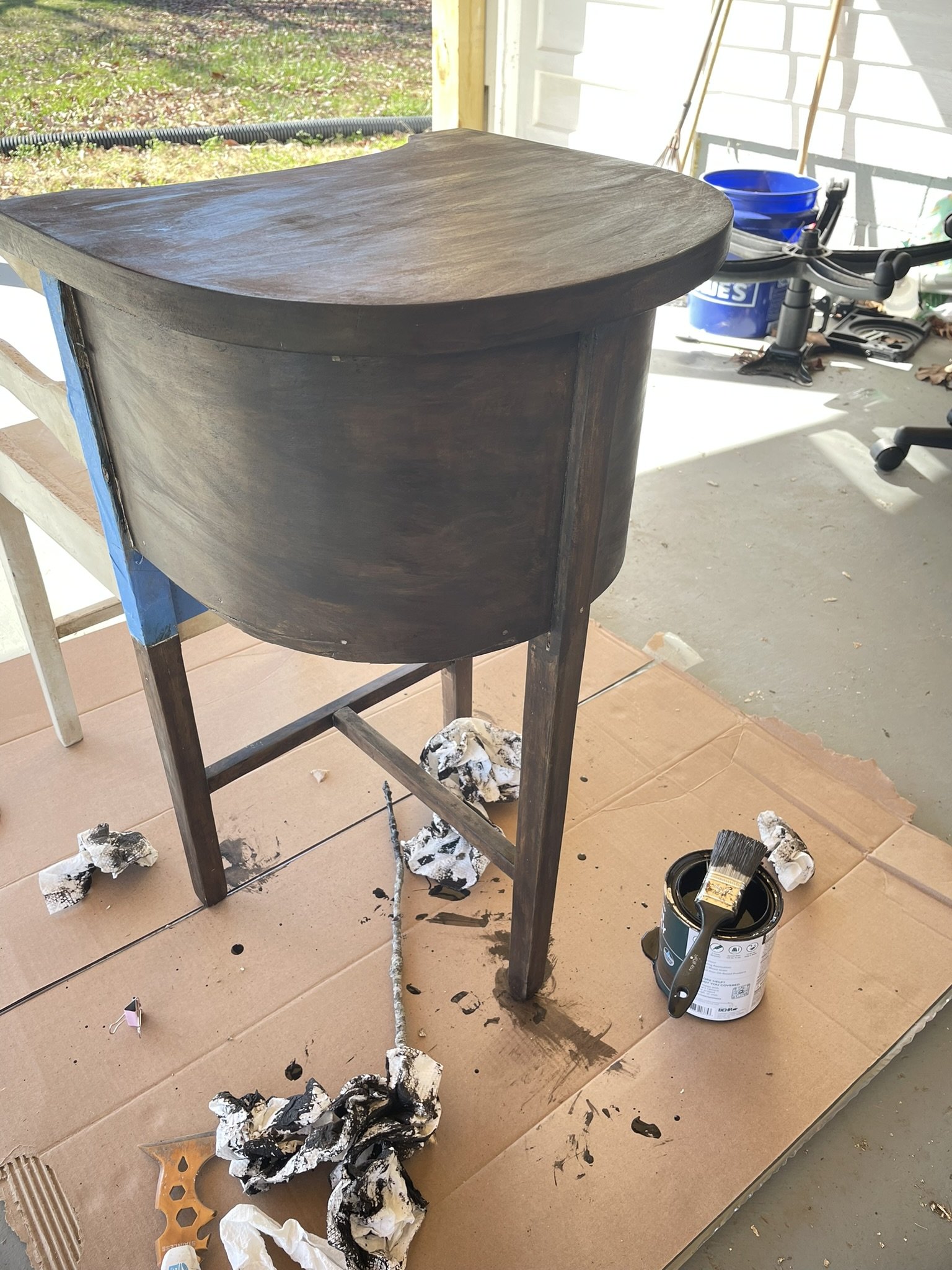


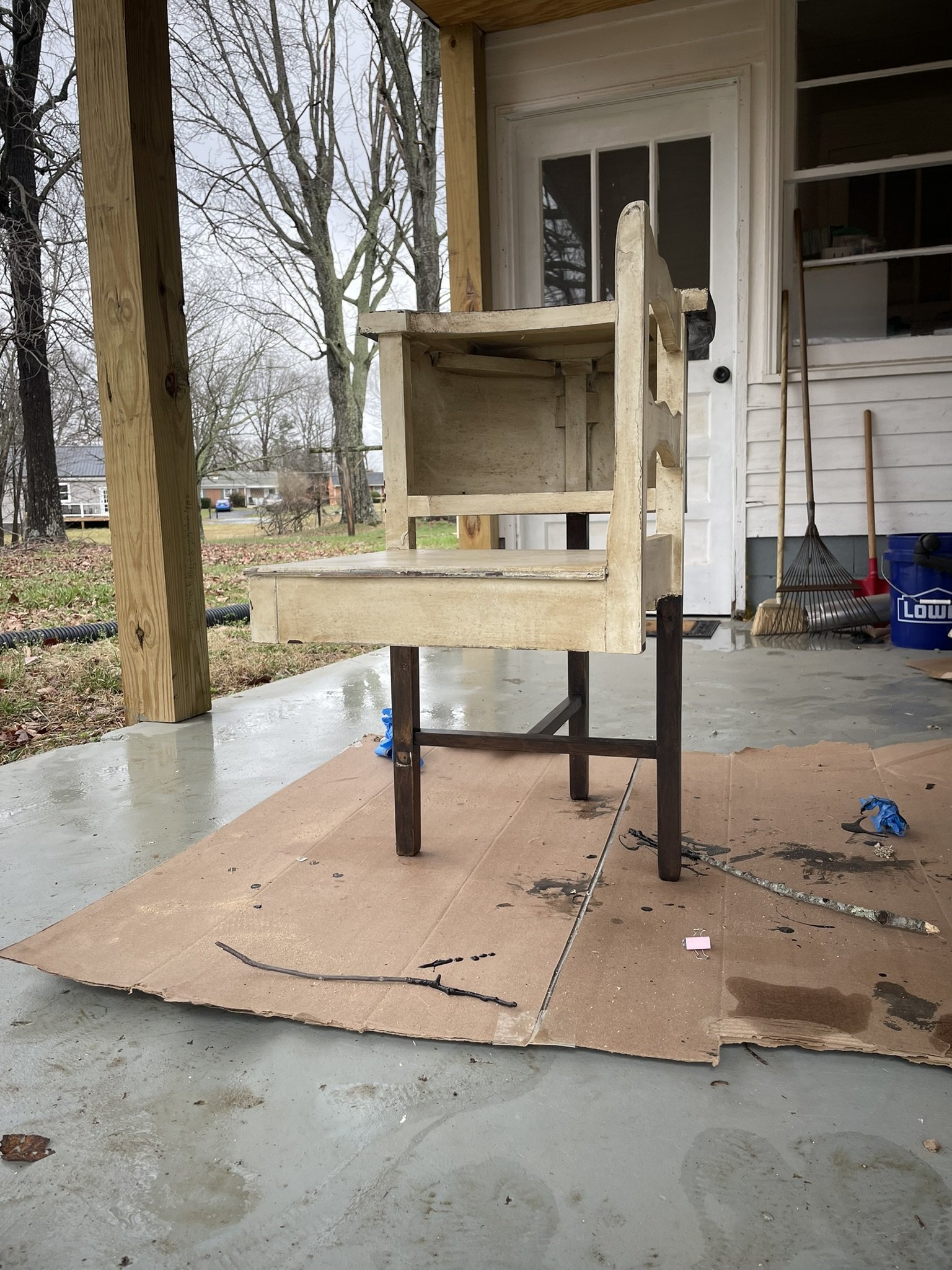

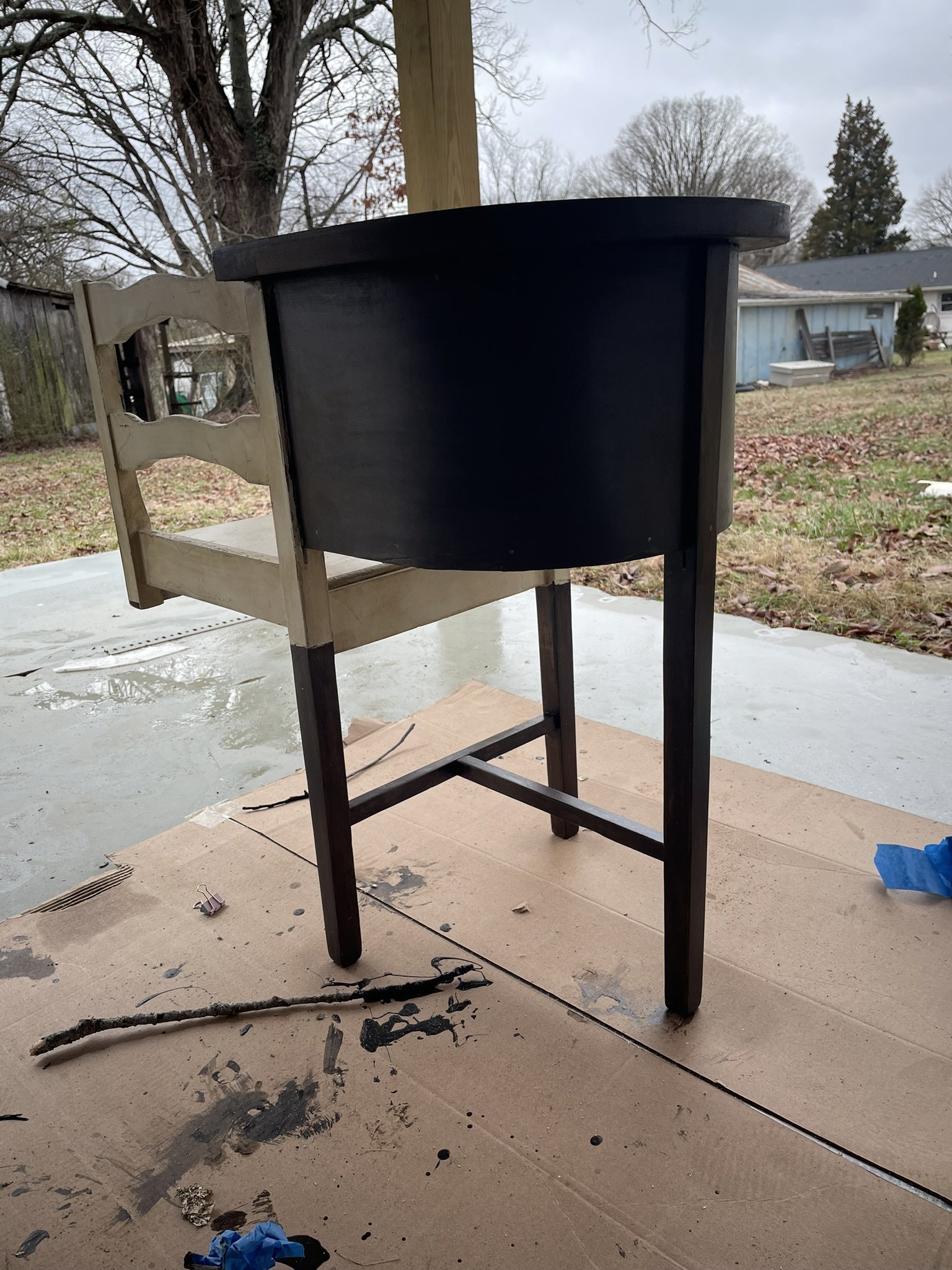




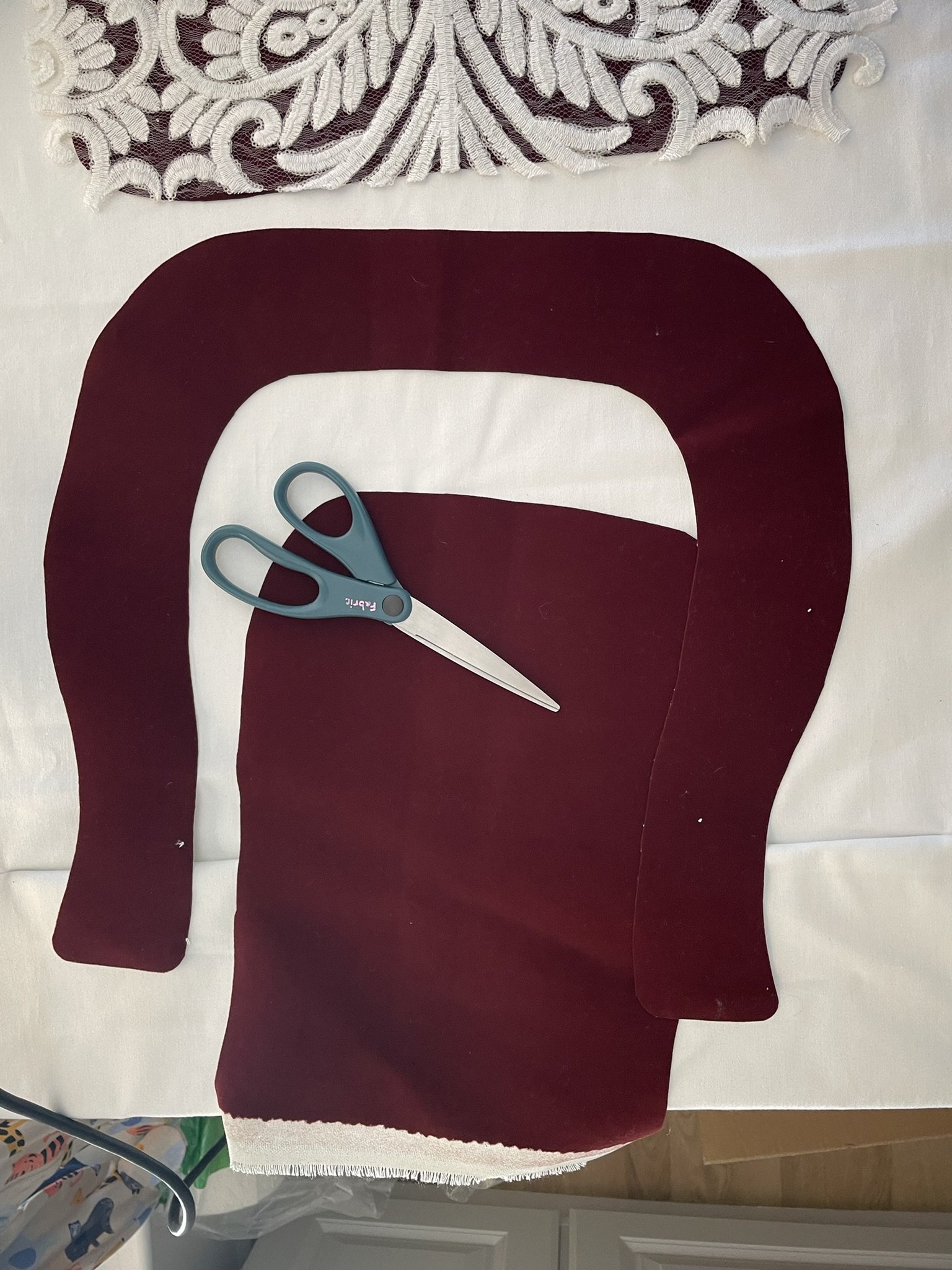








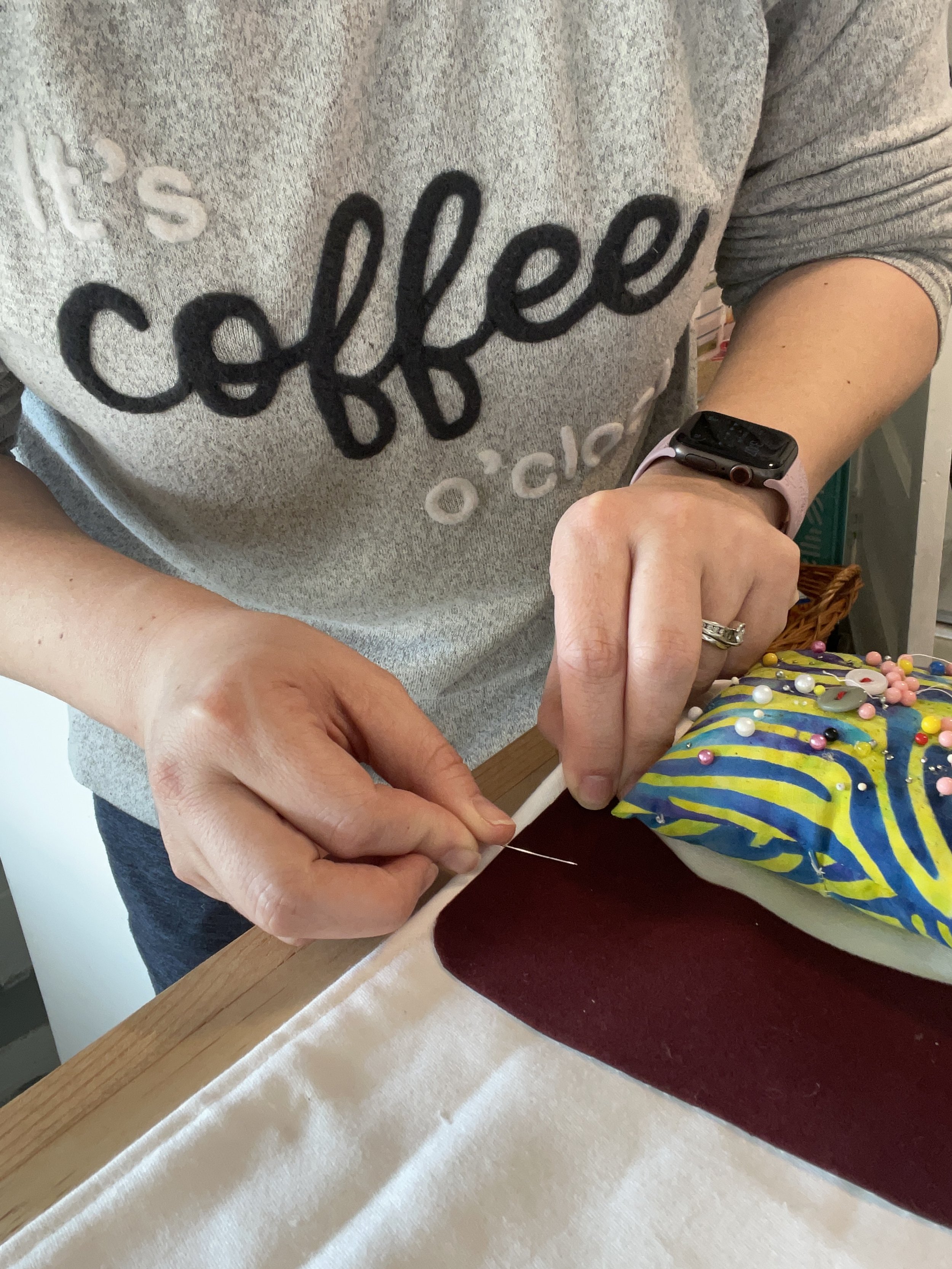








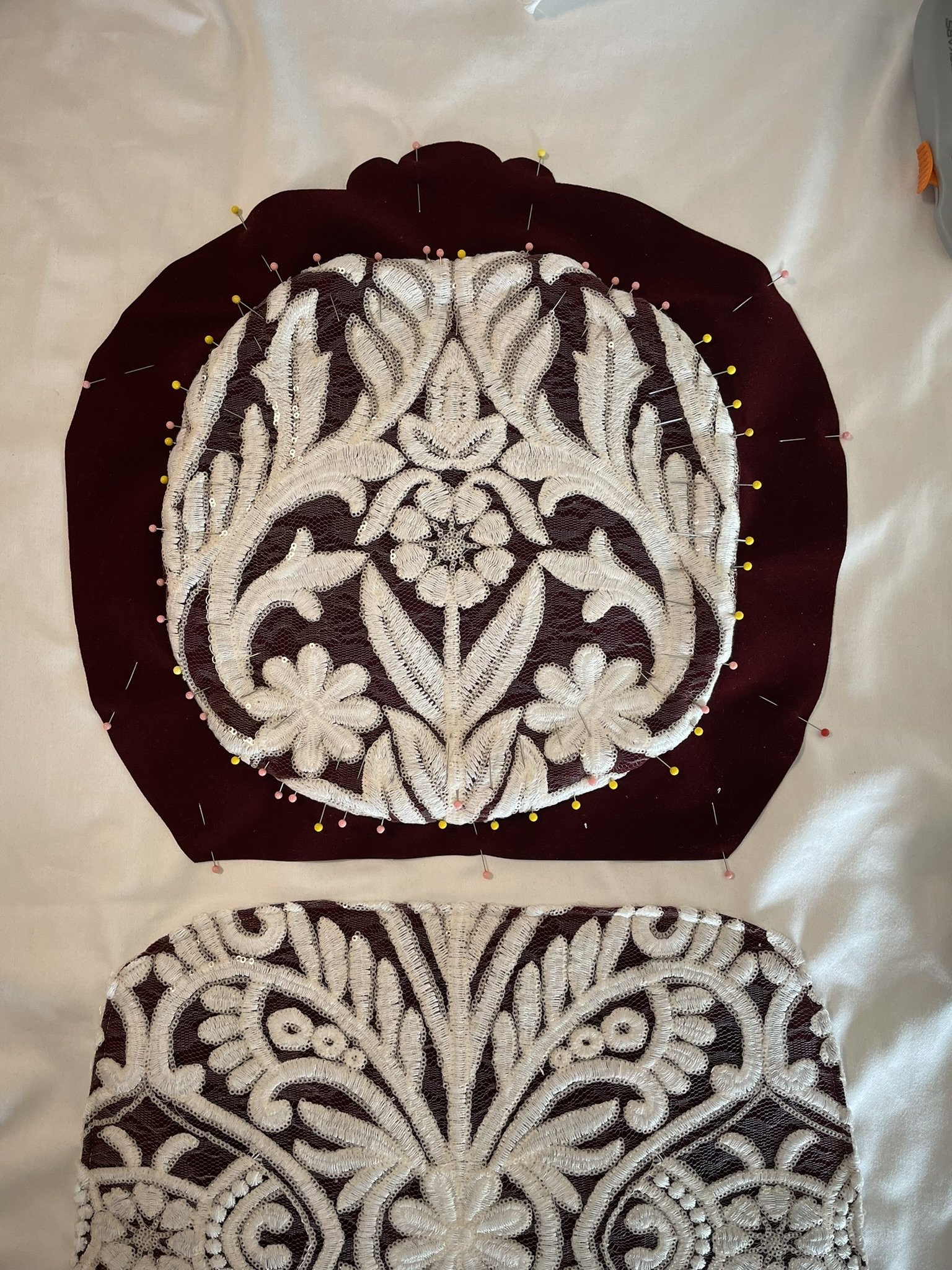








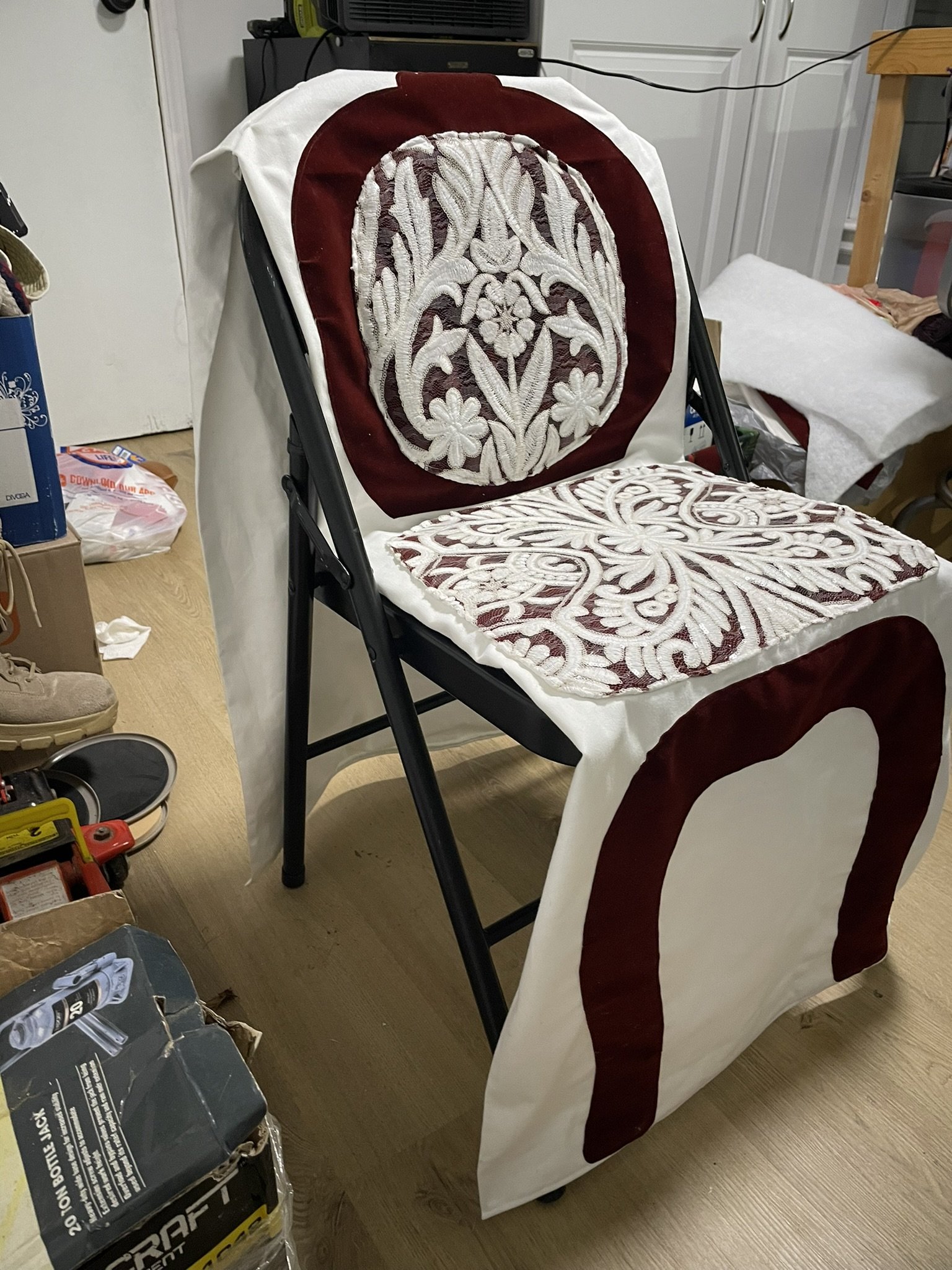
Wire Sculptures
In crafting my thesis document, initial line drawings depicting mother-child relationships sparked inspiration for wire sculptures. Selecting three drawings, I translated them into wire forms, meticulously bending black wire with needle-nose pliers to match the designs. Securely wrapping wire 2-3 times where needed, I left protruding ends for attaching to crafting foam backings. This process not only captured the essence of maternal connection but also conveyed the challenges of motherhood often overlooked in traditional portrayals. These sculptures serve as a visual testament to the shared experiences and struggles across diverse maternal roles, emphasizing the interconnectedness of motherhood. Through this methodical approach, the wire sculptures authentically depict the multifaceted nature of maternal bonds while highlighting the resilience and strength inherent in motherhood.
Wire Sculpture Progress Pics


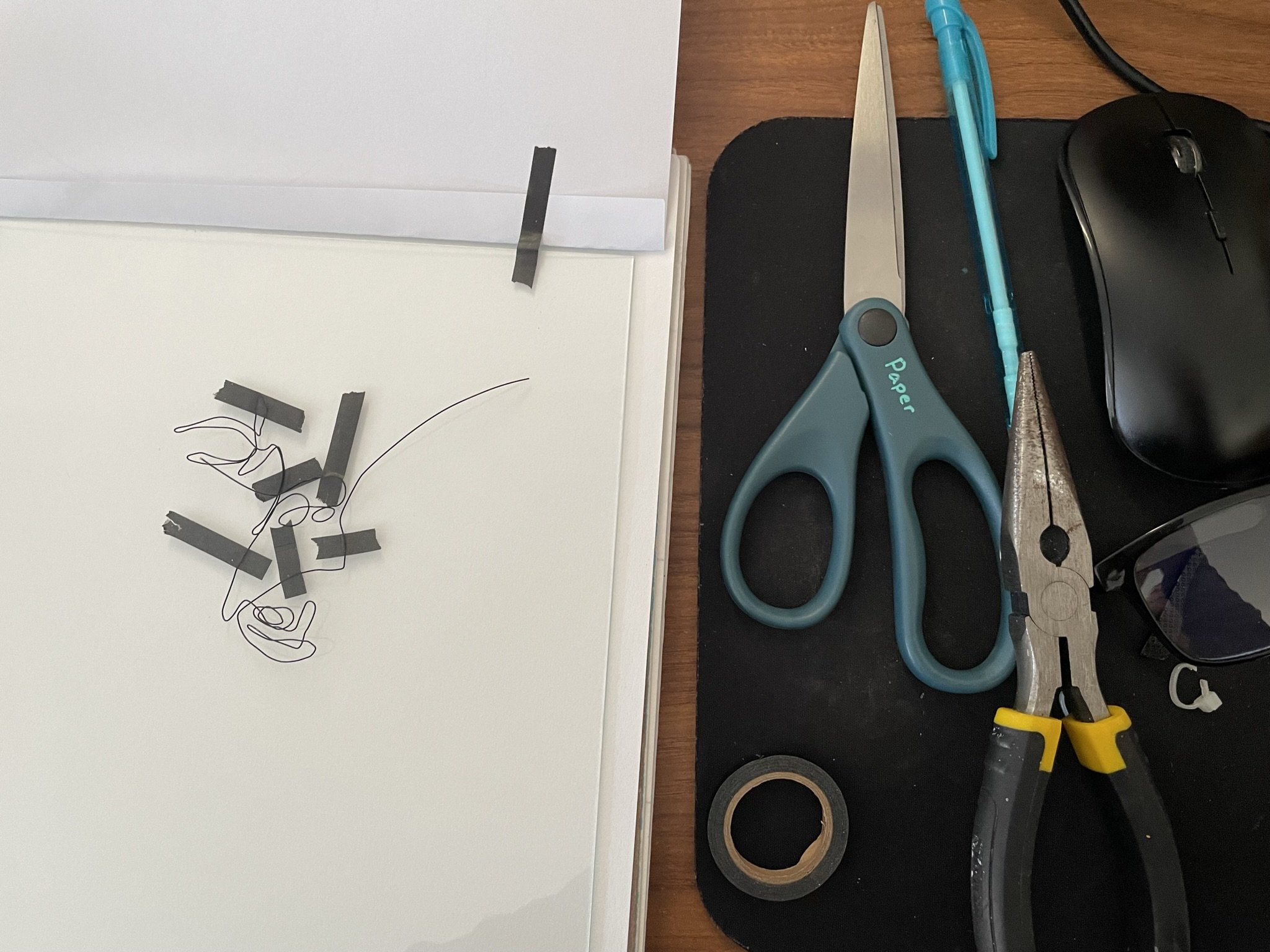
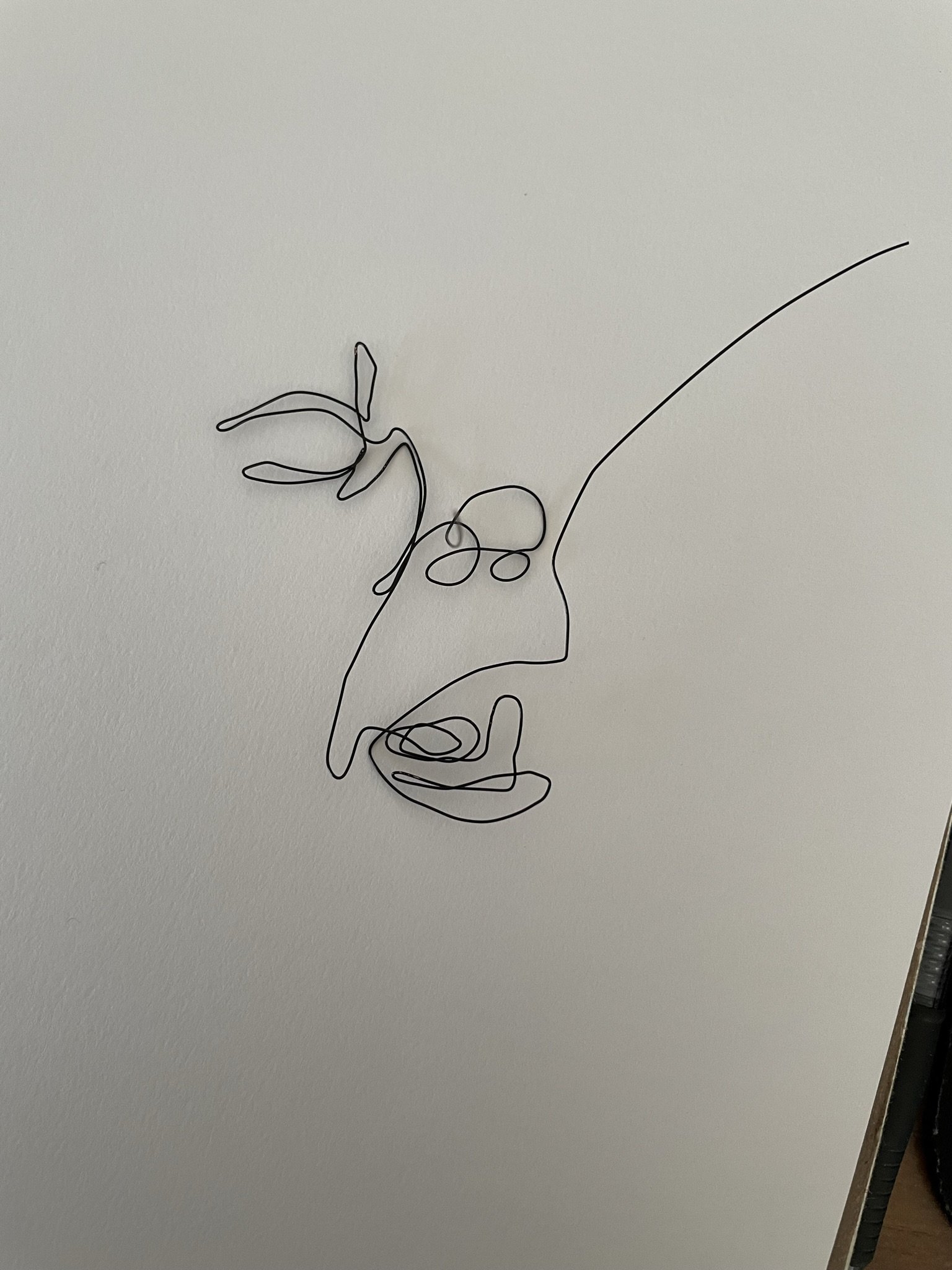





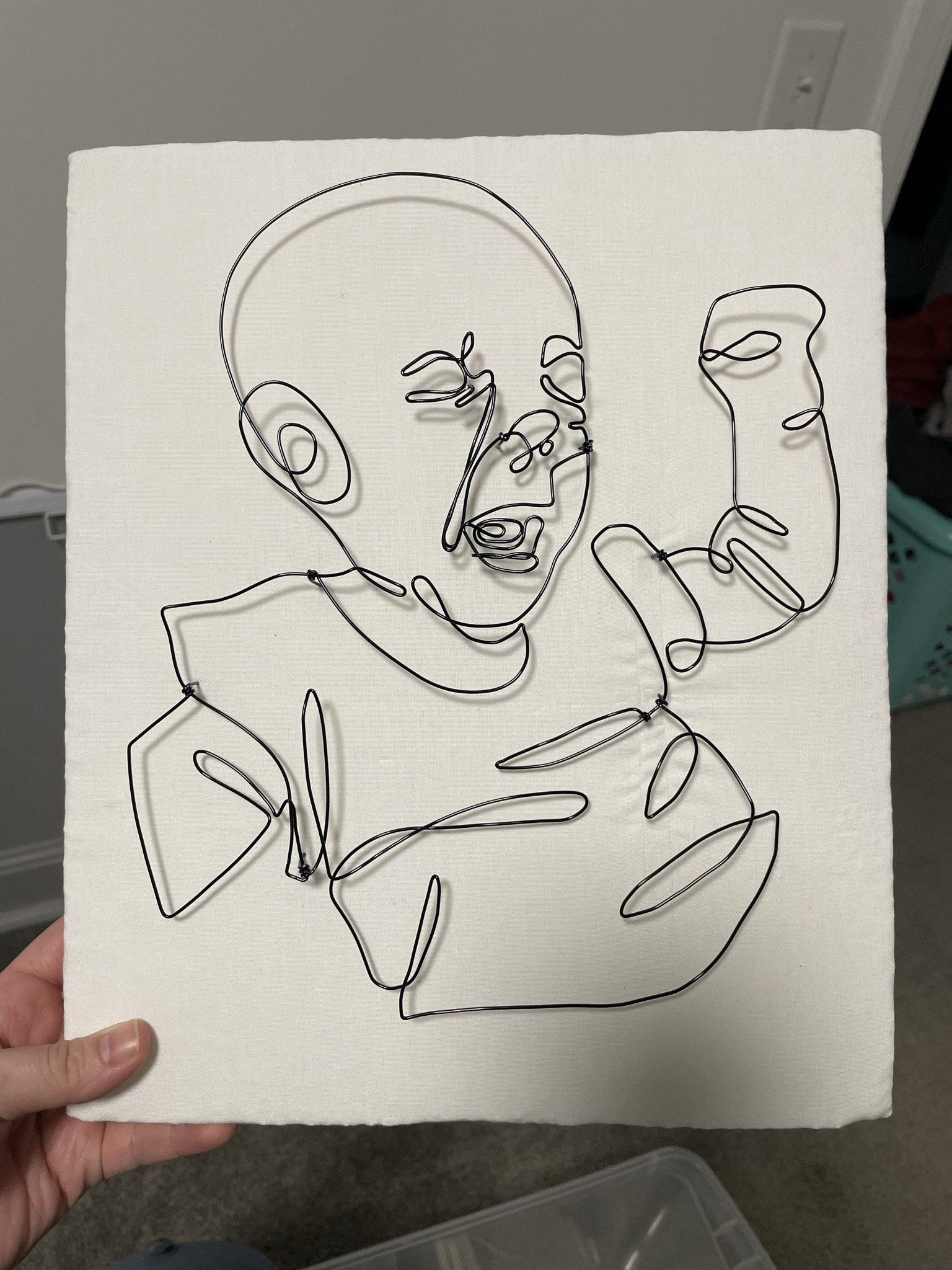
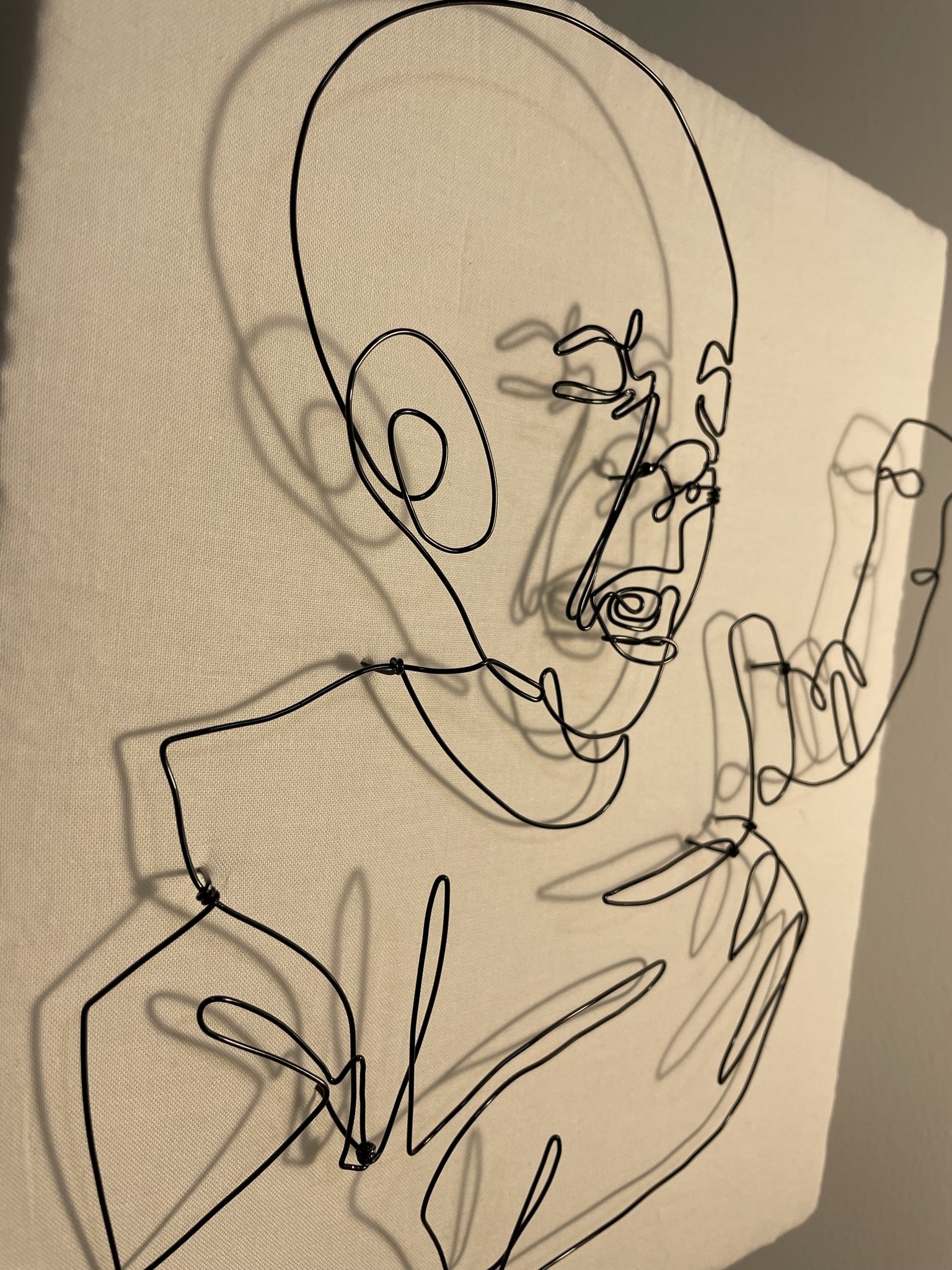

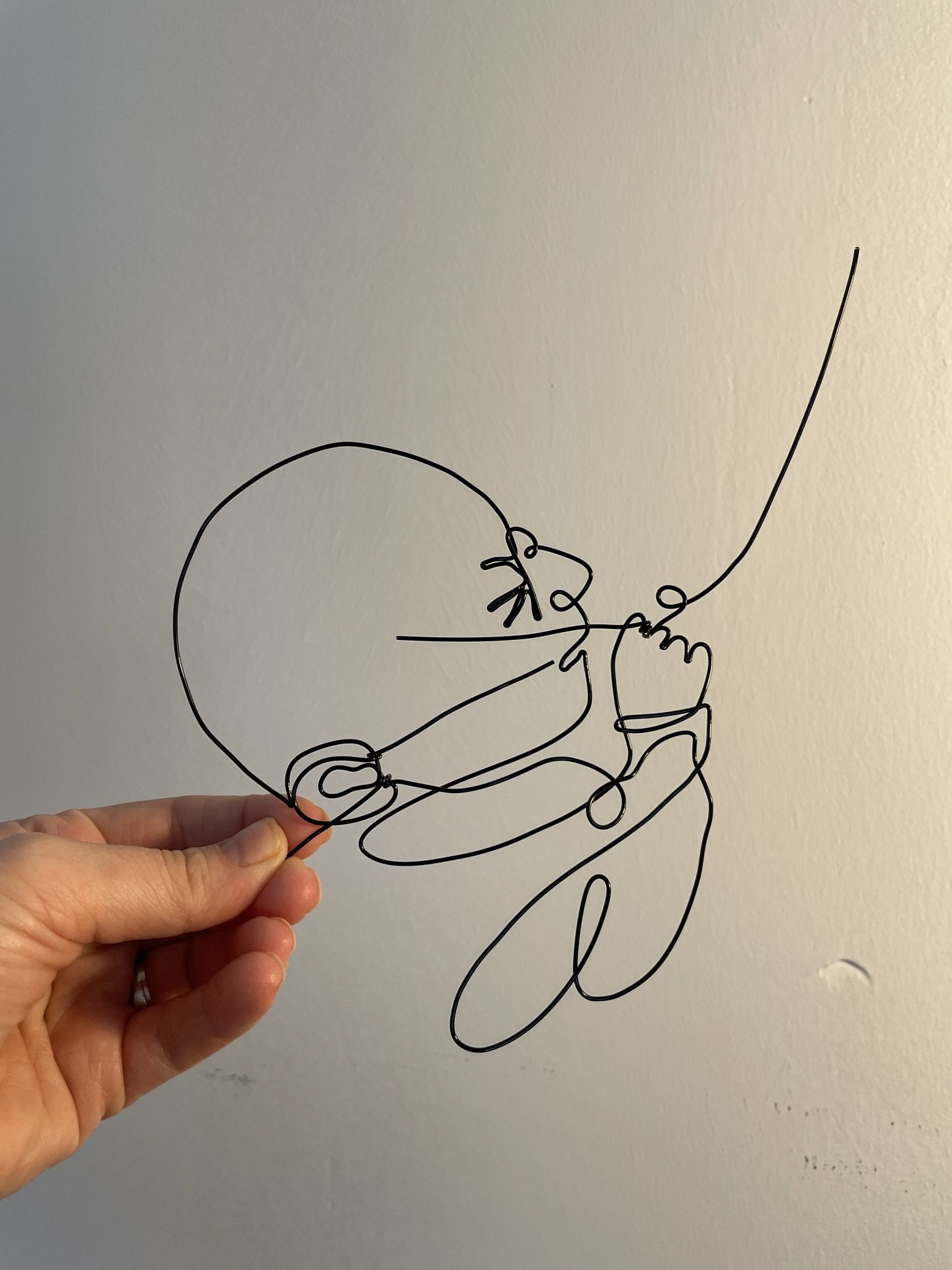

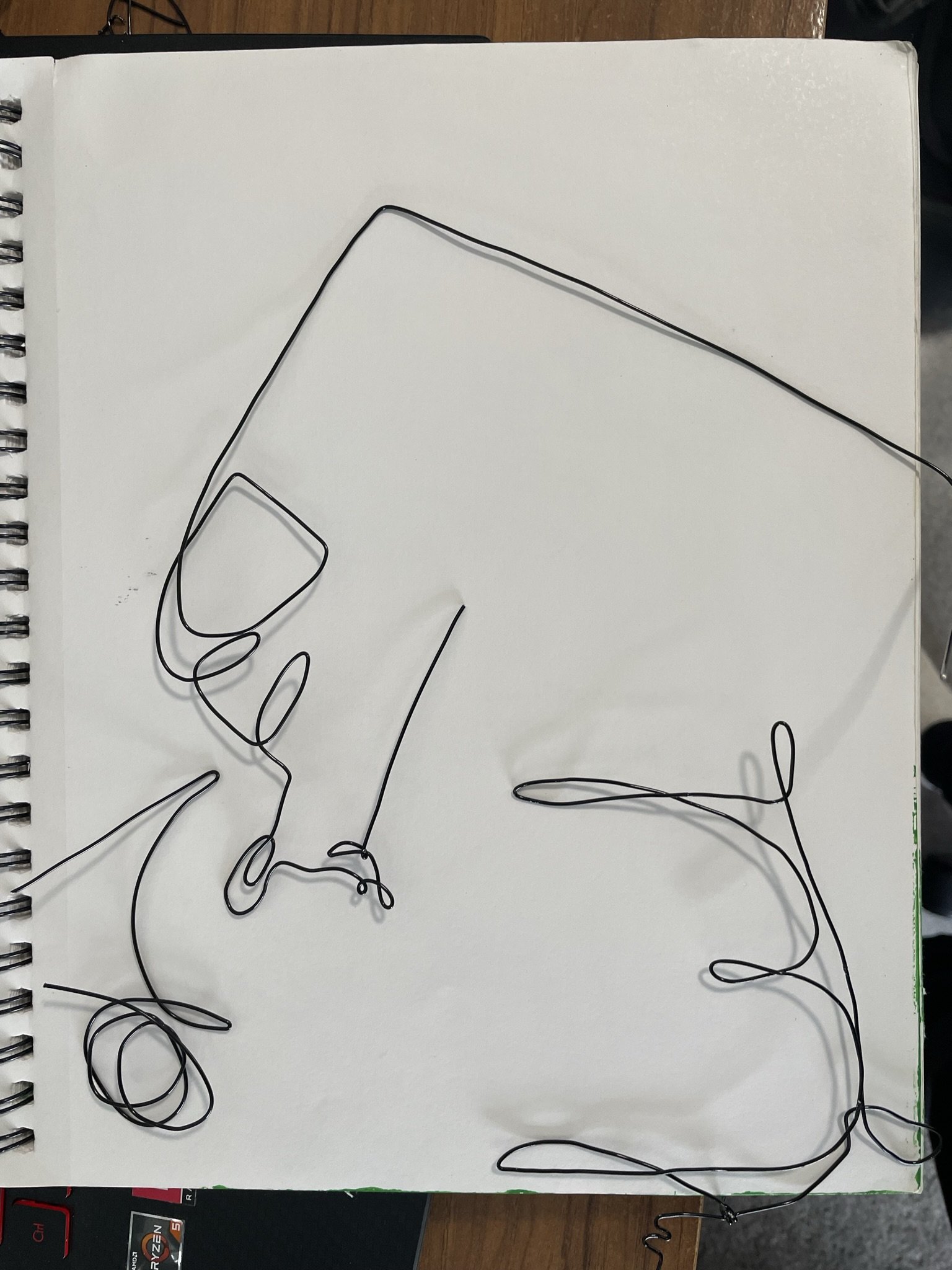

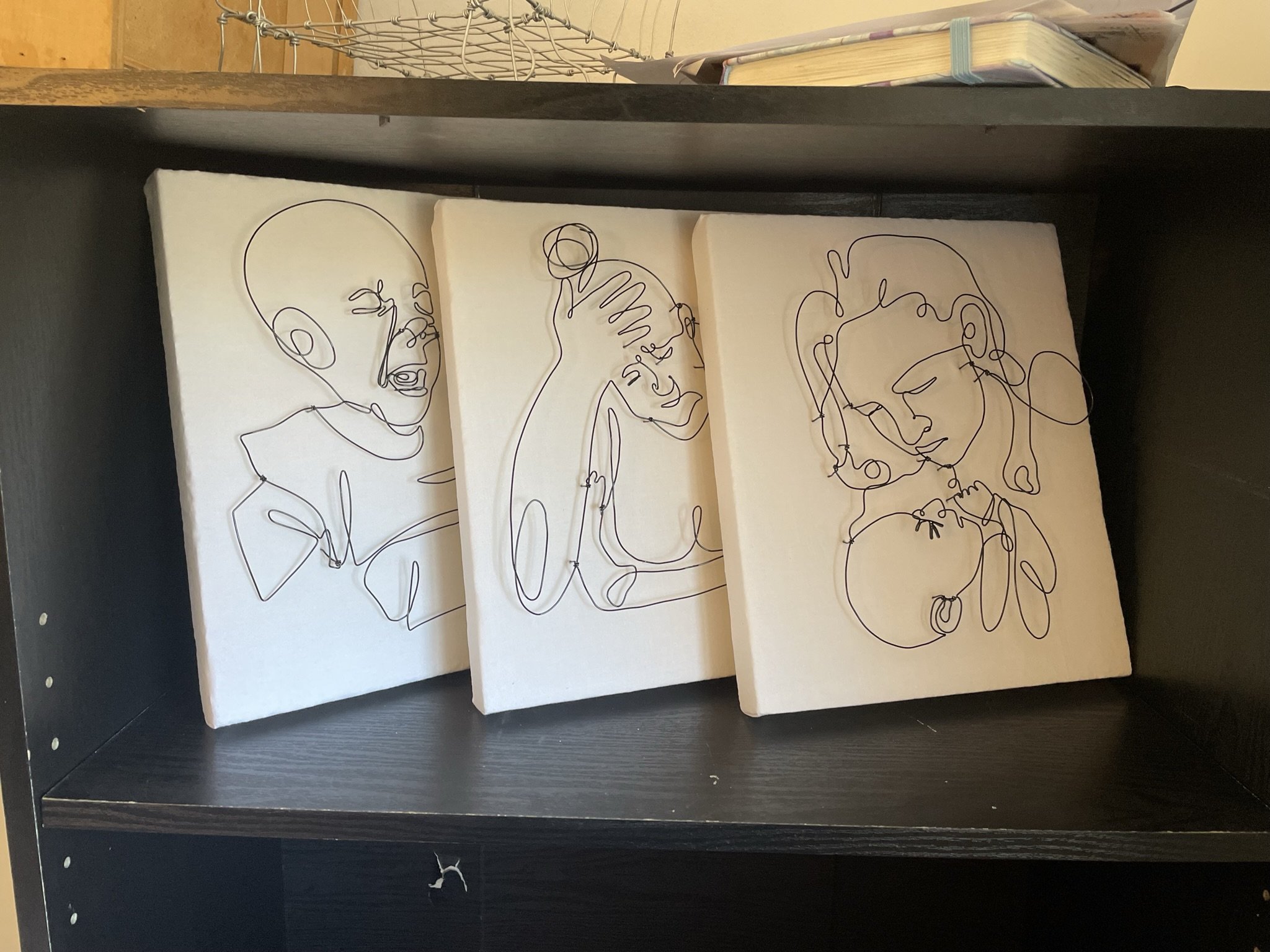


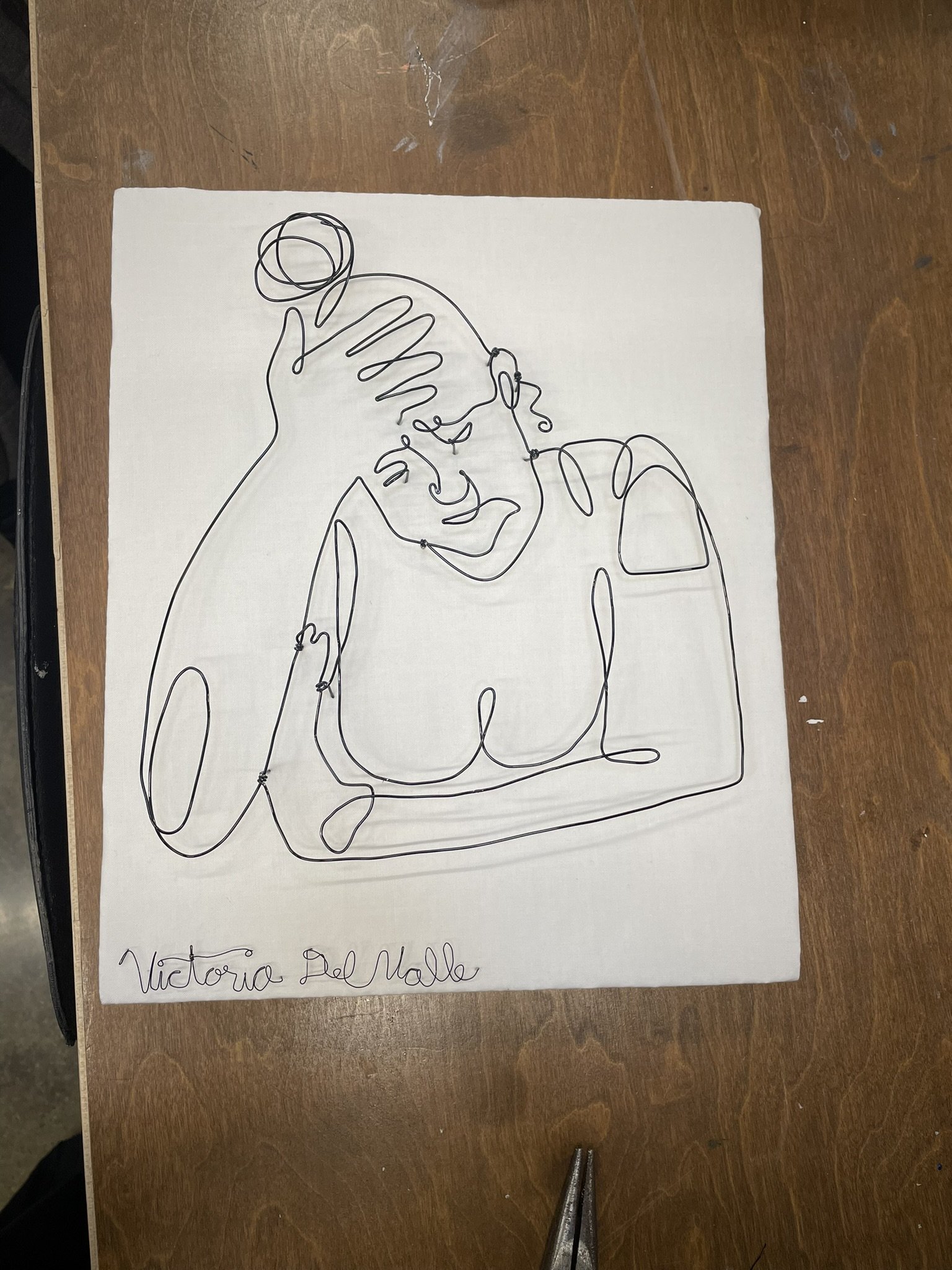


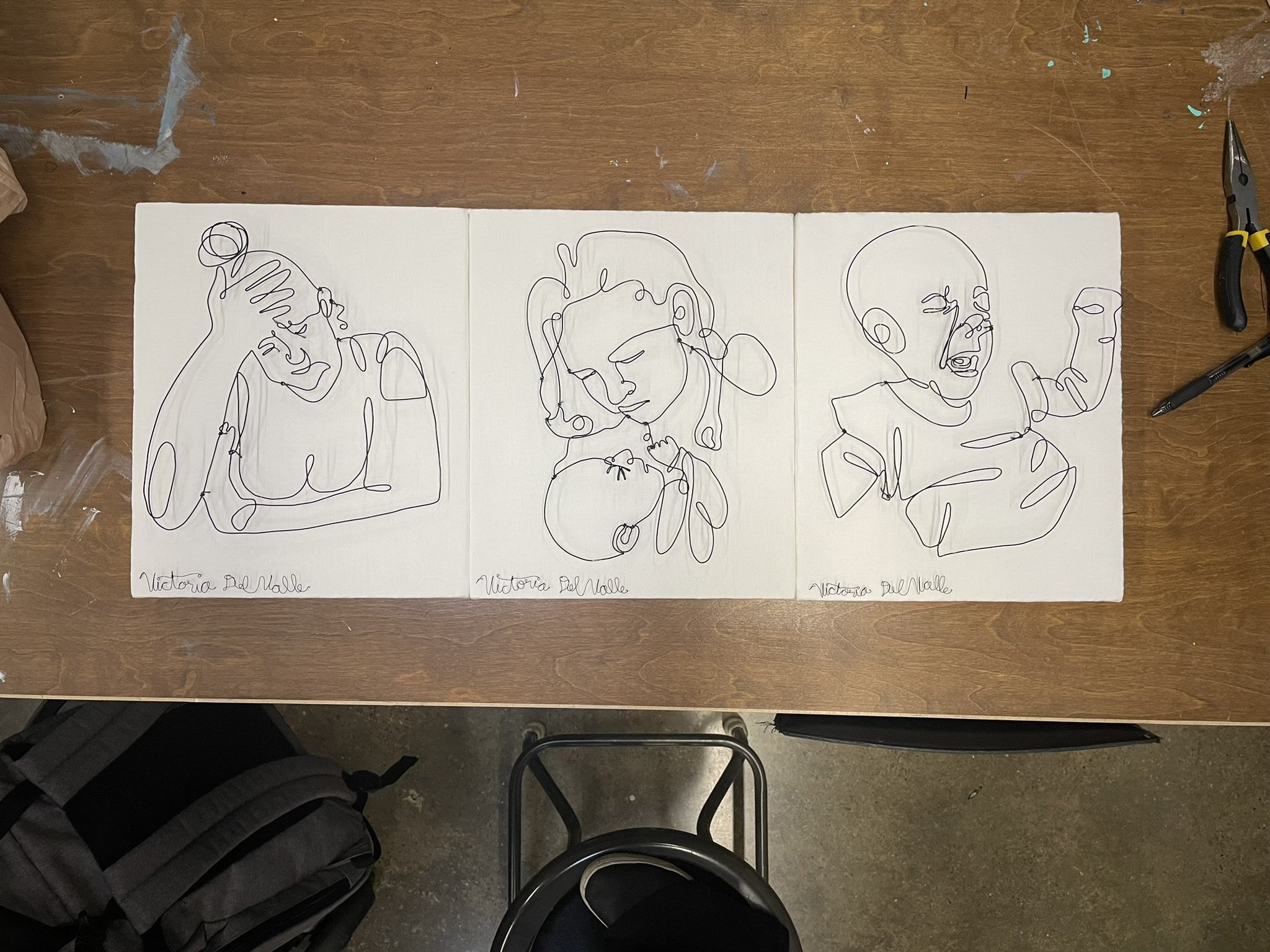
Dryer Sheet Sculptures
Using dryer sheets instead of paper, I began by digitally designing poses based on reference photos. Simplified and layered in InDesign, these designs guided the creation process. Actual dryer sheets, dyed with food coloring, were ironed and cut to shape. They were then layered between sheets of plexiglass, secured with screws. Assembly involved careful alignment to minimize static interference, with wooden kabob skewers used for fine adjustments. The choice of used dryer sheets adds a personal touch, echoing maternal experiences. This meticulous process ensures the sculptures authentically capture the isolation and interconnectedness of motherhood.
Dryer Sheet Sculpture Progress Pics


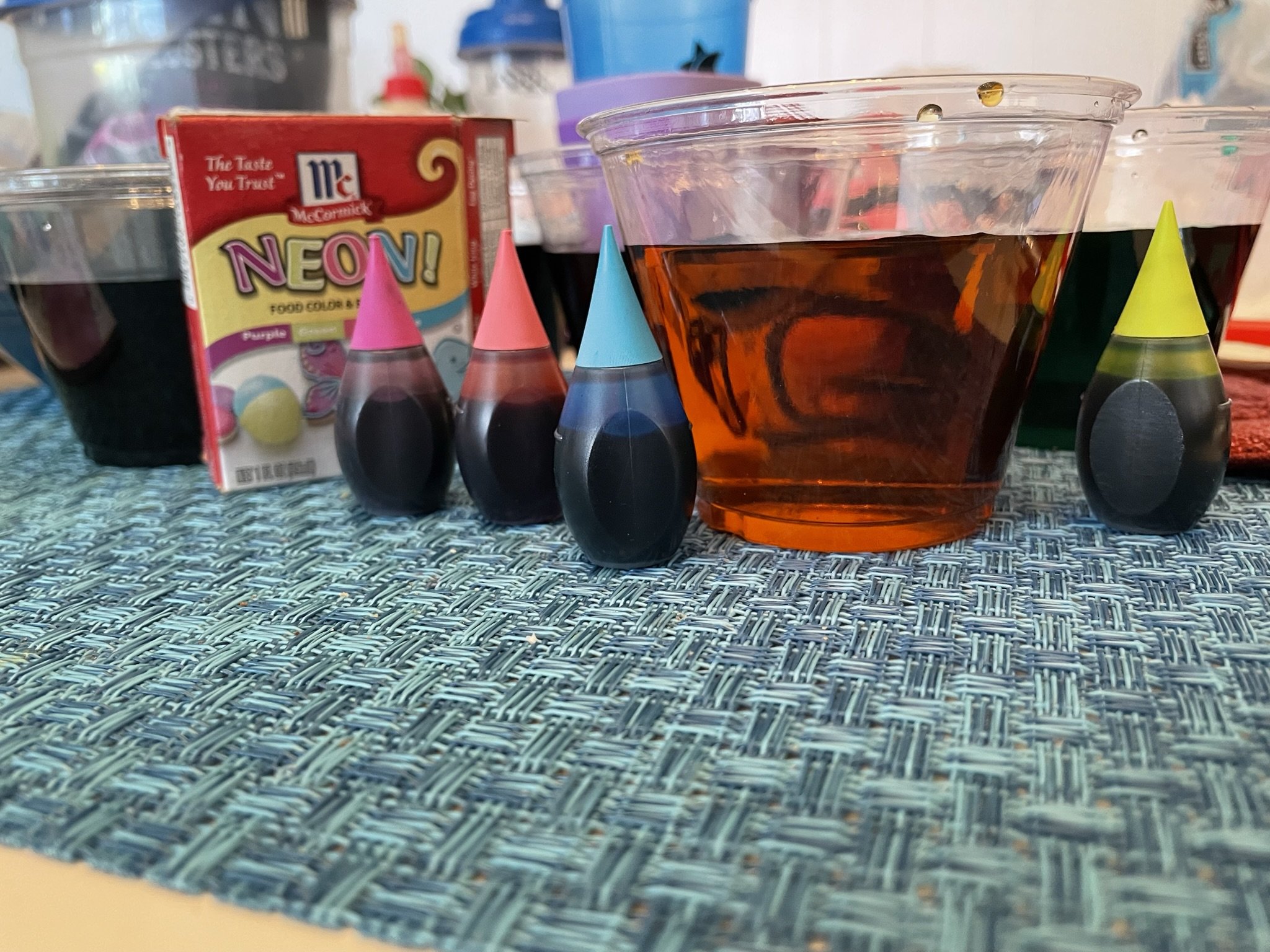

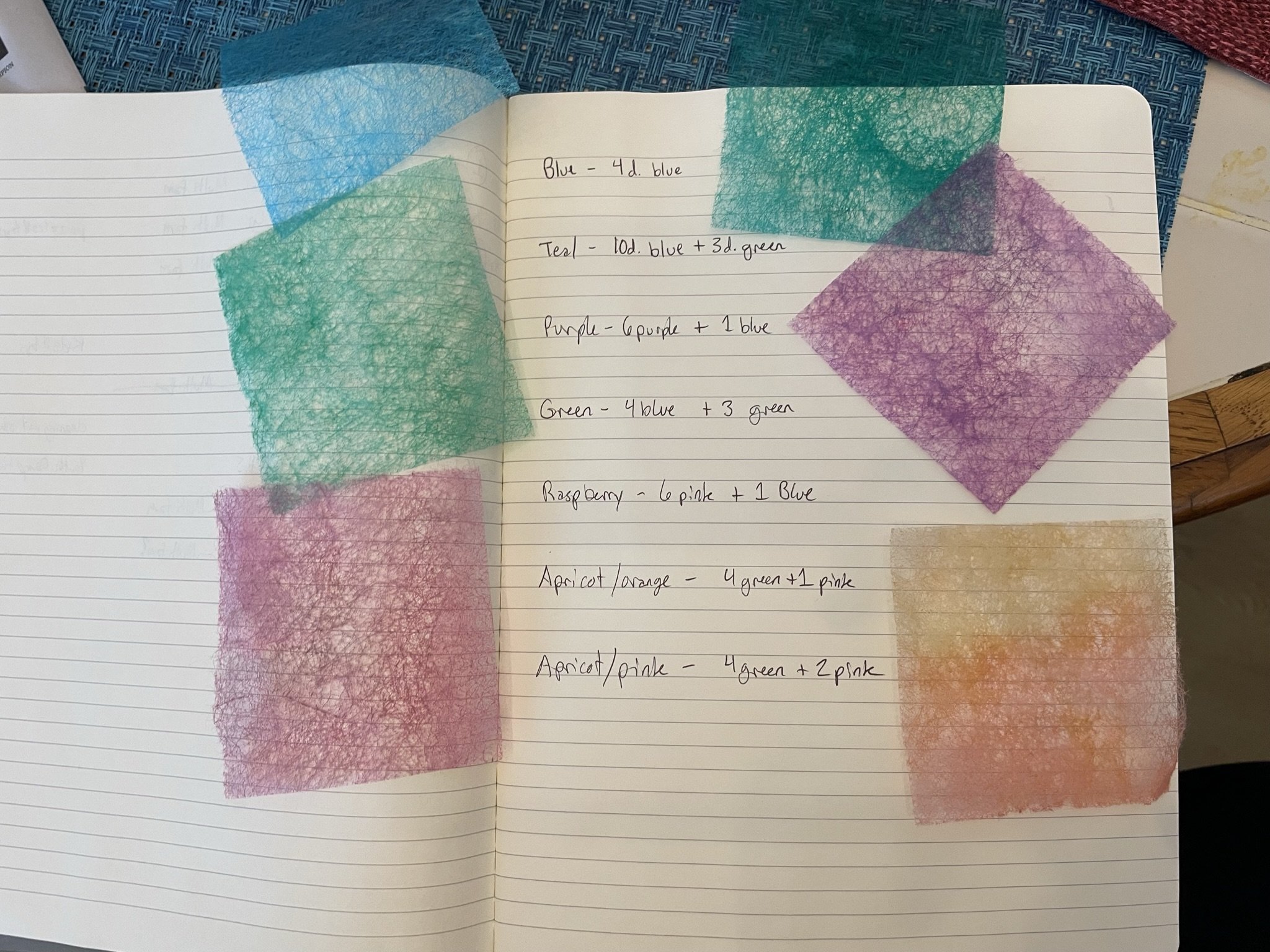

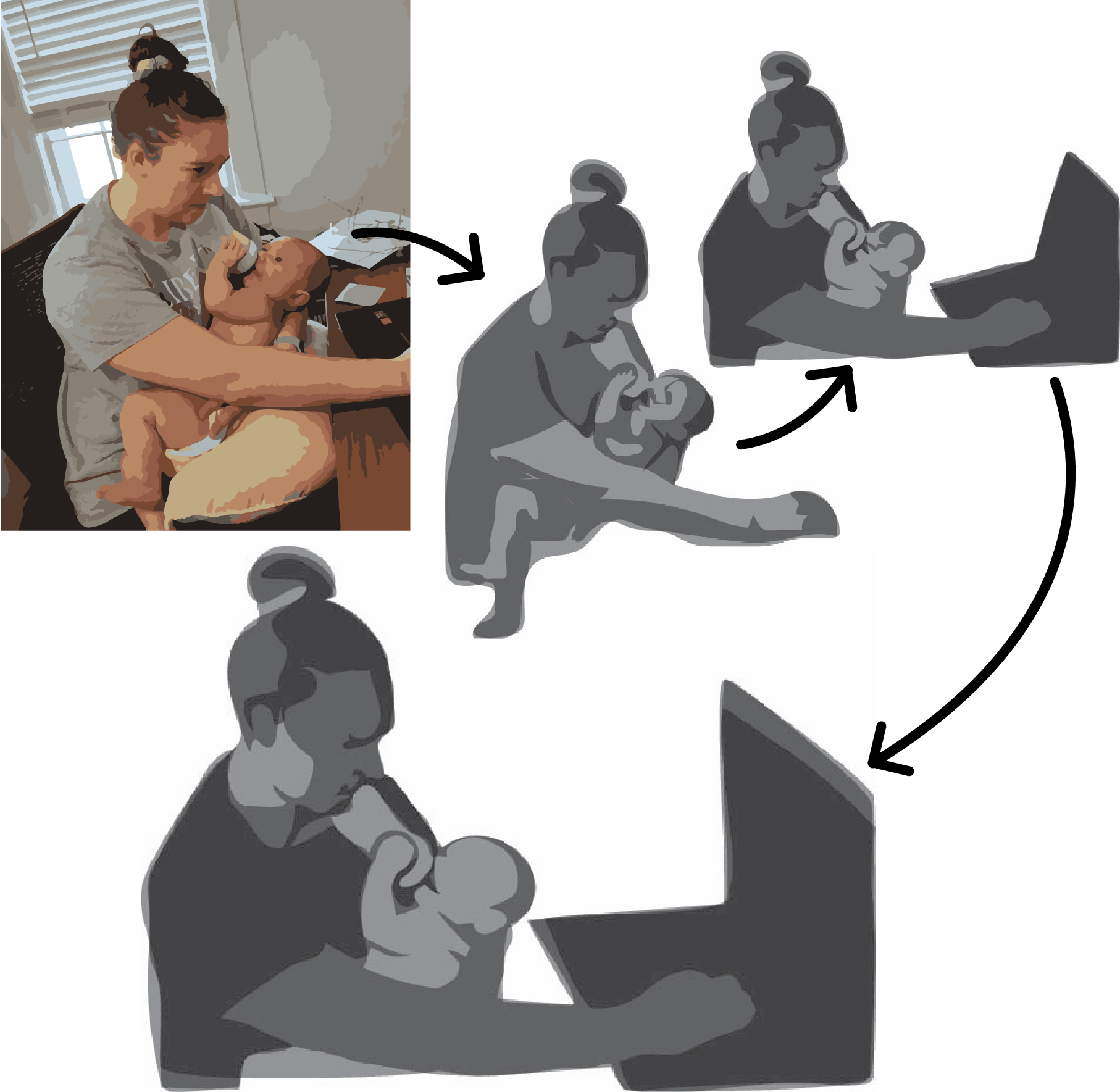


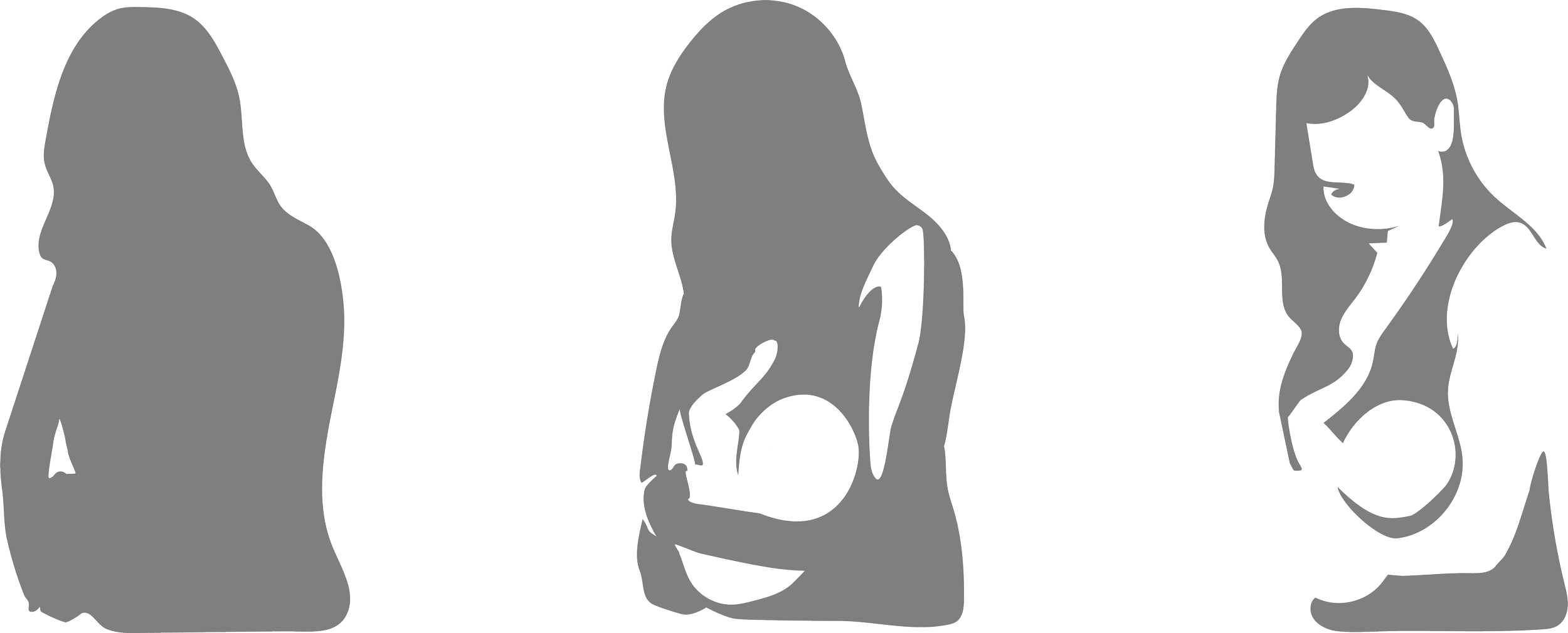
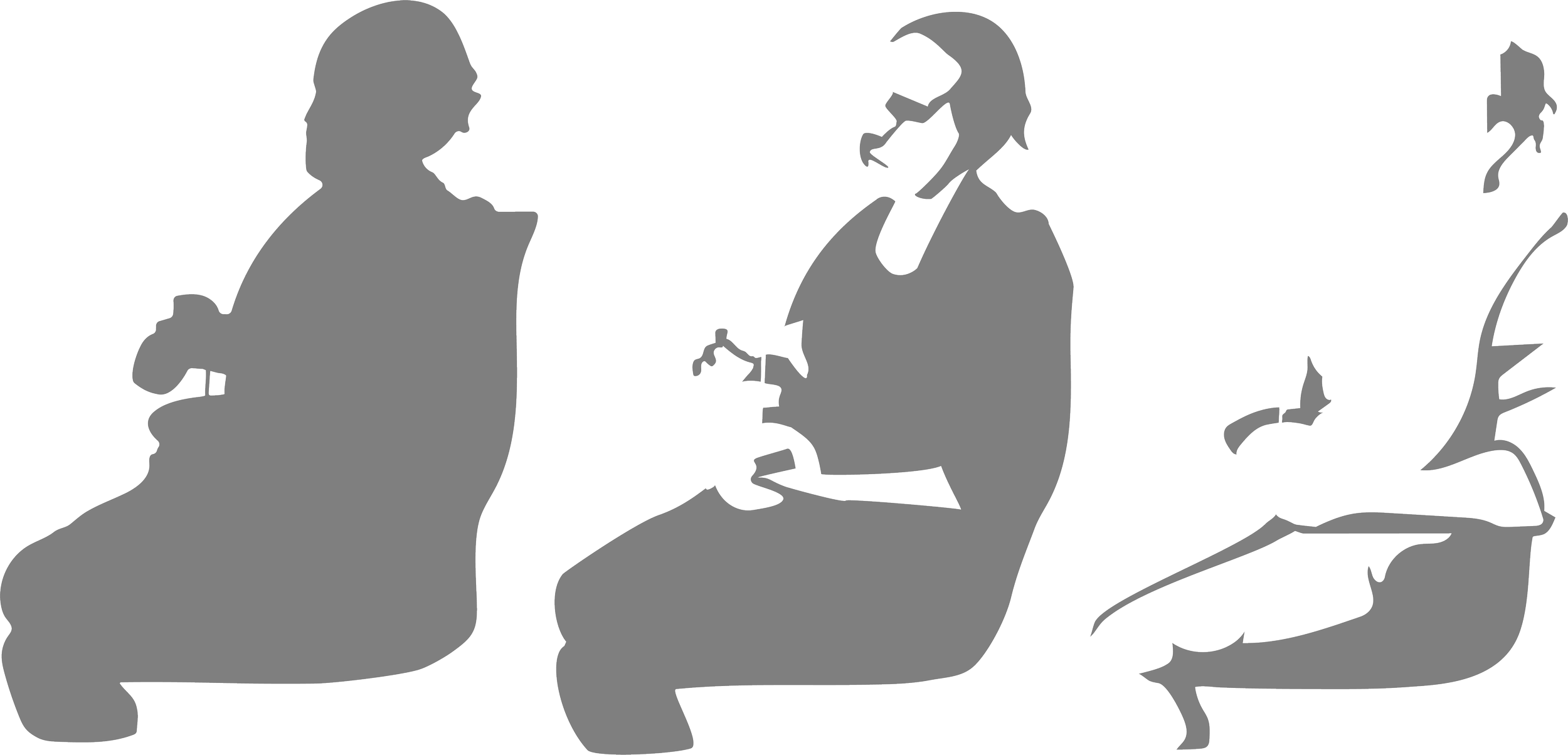


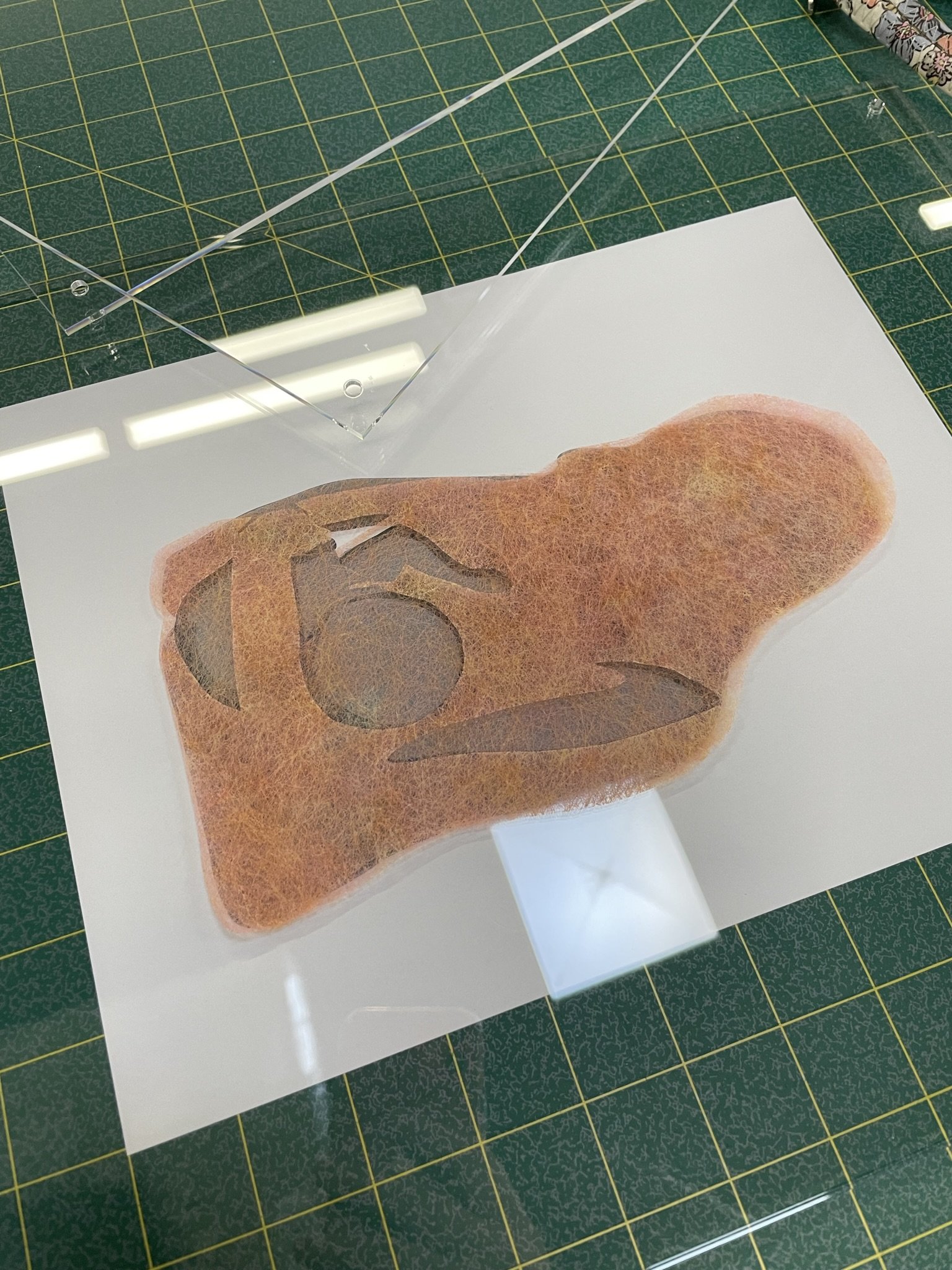
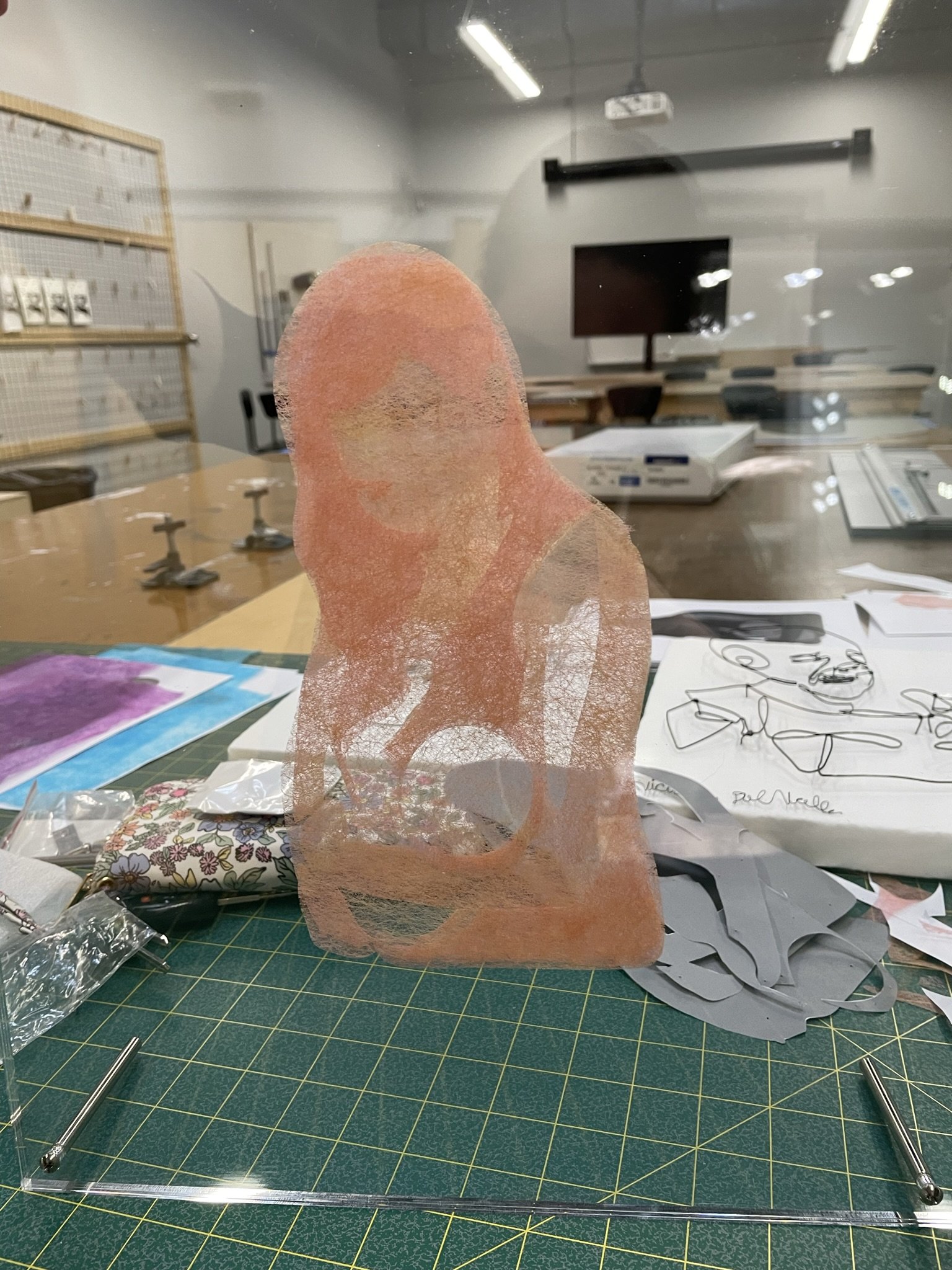

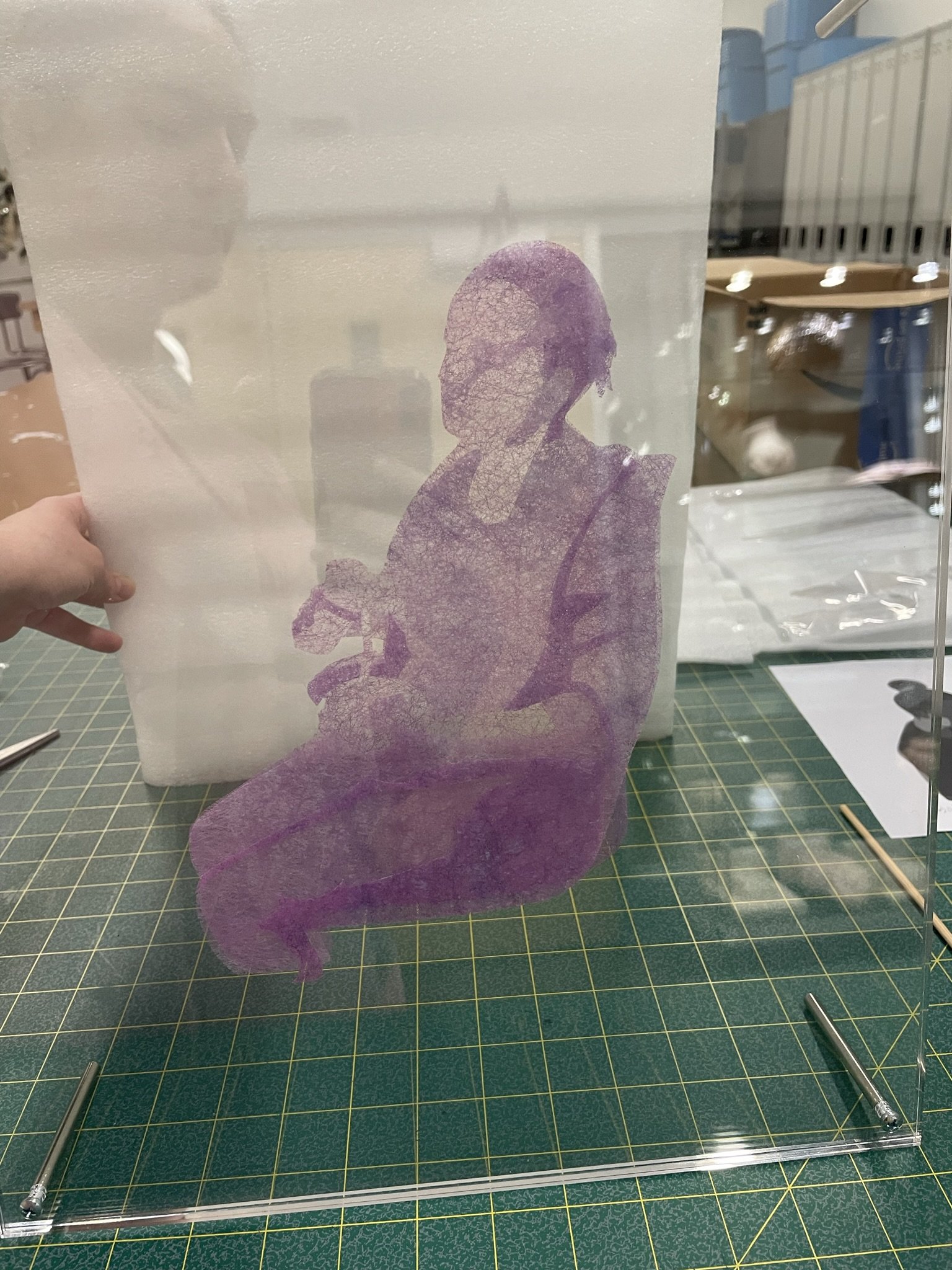



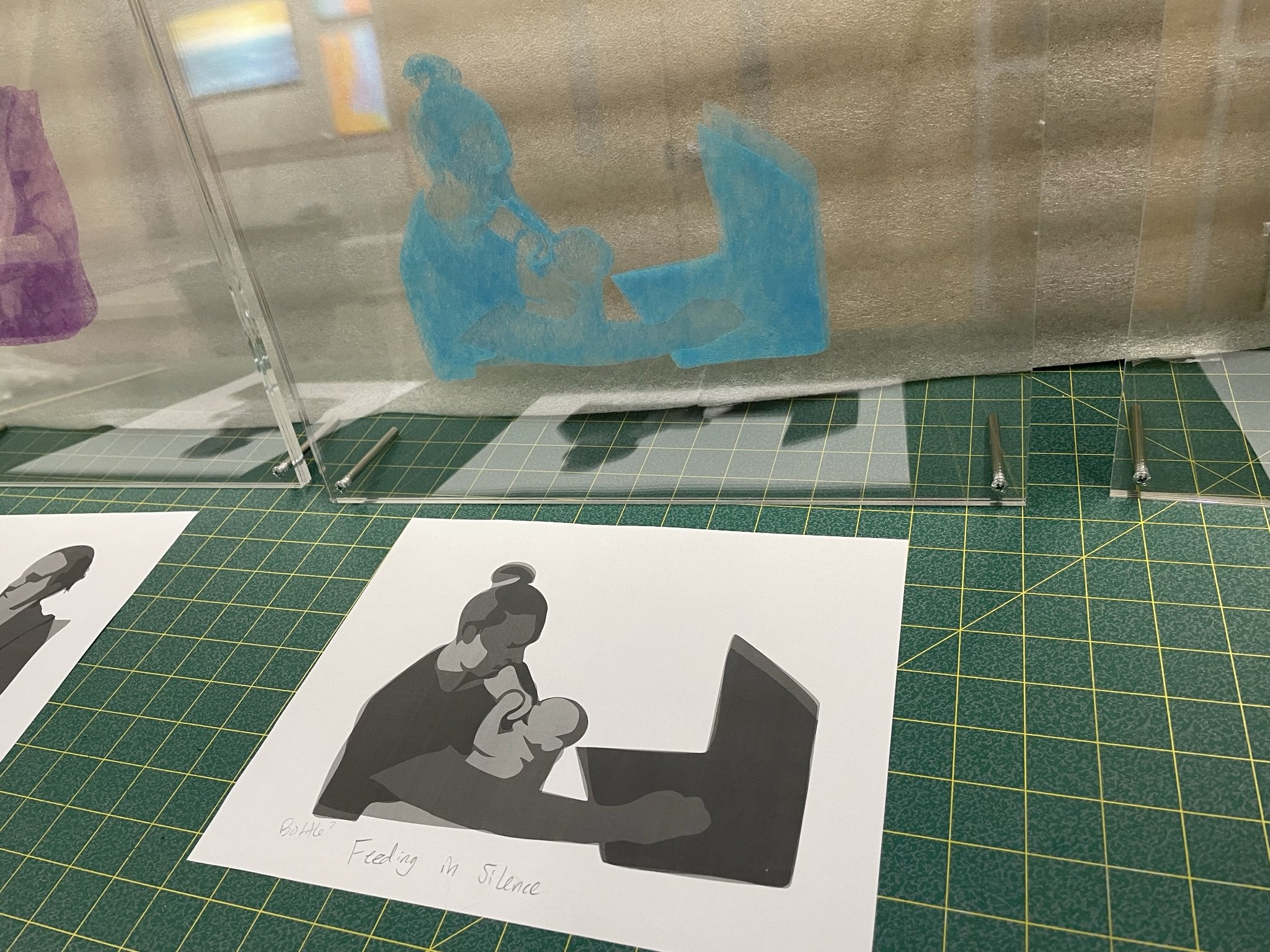
Final Visual Solution
The research done on the topic of motherhood greatly informed all of my design choices and influenced the final visual solution. Every decision — from the choice to make sculptural chairs to the images represented and more — was a product of the research that was conducted. Several types of sculptures were created to show the many aspects of motherhood and the specific struggles that are being dealt with — chair, wire, and dryer sheet sculptures.

Sculpture Breakdown
-

Chair Sculptures
Five chair sculptures were created, each representing a different mothering group and the struggles they endure.
-
Wire Sculptures
Three wire sculptures were created, representing difficult times in a mother’s life and how disparate groups are connected through these struggles.
-

Dryer Sheet Sculptures
Three dryer sheet sculptures were created, representing a time of physical and emotional isolation for mothers.
Chair Sculptures
The Working Mother
The Working Mother is represented using an office chair as a recognizable symbol of work. Research shows that working mothers often struggle with high self-expectations, anxiety, and feelings of inadequacy. This struggle is depicted by a string pulled taut from the armrest and seat to the seat back, symbolizing their feeling of being pulled in many directions. The pristine chairback contrasts with the torn seat, reflecting the challenge of balancing home and work life. Additionally, two legs of the chair base are missing, symbolizing the difficulty for working mothers to ask for help and find support. Overall, the sculpture portrays the worn-down nature of working mothers, illustrating the imbalance they often face.
The Stay-at-Home Mother
For the Stay-at-Home Mother, I chose a kitchen chair as the base, symbolizing the home, their primary workplace. One major challenge they face is the blurred boundaries between personal, work, and family time. Home becomes inseparable from work, leading to a devaluation of their labor. To illustrate this, I used kitchen utensils as the chair back, blurring their functional distinctions. Shortening the seat visually represents the imbalance in their lives, exacerbated during the pandemic when space and routines were disrupted. Raising the seat back height reflects the heightened standards they're held to by other mothers. Stay-at-Home Mothers automatically assume responsibility for all things in the home and in this way find themselves overwhelmed by the inequalities and unbalanced nature of their job.
The Student Mother
The Student Mother is represented by a chair with an attached desk, symbolizing their student status. I depicted the main concern of Student Mothers, a lack of childcare, by replacing the chair's legs with children's toys, visually illustrating the child underfoot as the biggest source of imbalance. The toys are turned upside-down to signify how unpredictability, like the pandemic, can disrupt systems. The desk chair's rigid structure reflects the strict guidelines they face. Student Mothers sacrifice their own desires to support their families' future, evident in the drawer under the chair filled with abandoned projects and hobbies. They struggle with childcare, rigid university guidelines, and sacrificing personal desires, creating imbalance.
The Other Mother
I encountered some mothering struggles that were not specific to any one of the previously mentioned groups and decided to create an Other Mother representation to highlight these struggles. For the base, I selected a gossip chair, which isn't conventional — it includes an attached table. This reflects how some mothers, like those of miscarriage, aren't always recognized as "real" mothers. To depict the lack of perceived social support many mothers face, I removed the chair's legs. The cleaned and refinished table attached to the seat illustrates how mothers often neglect themselves to prioritize their children's needs, reflecting a significant struggle for mothers overall.
The Ideal Mother
The notion of the ideal mother is ultimately unattainable, as it doesn't truly exist. Instead of attempting to depict it, I chose to focus on the fiction surrounding it. At first glance, an elegant chair made of beautiful materials is seen. However, it's merely a facade—underneath lies a plain, flimsy folding chair not meant for permanence. This portrayal reveals the inauthenticity of the idealized mother. Despite its initial allure, closer inspection reveals imperfections and wear, mirroring the narrative's inability to withstand scrutiny.
















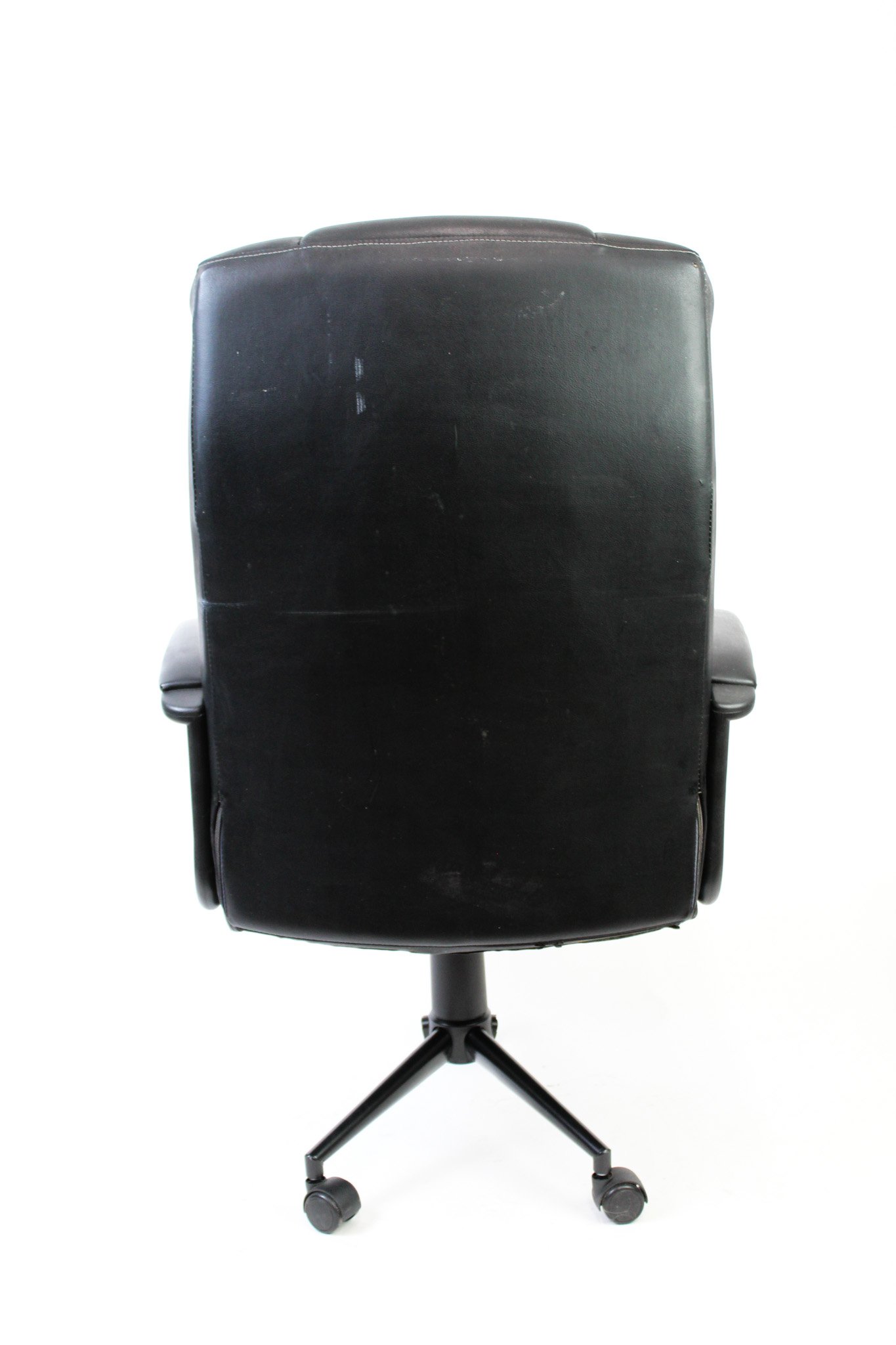


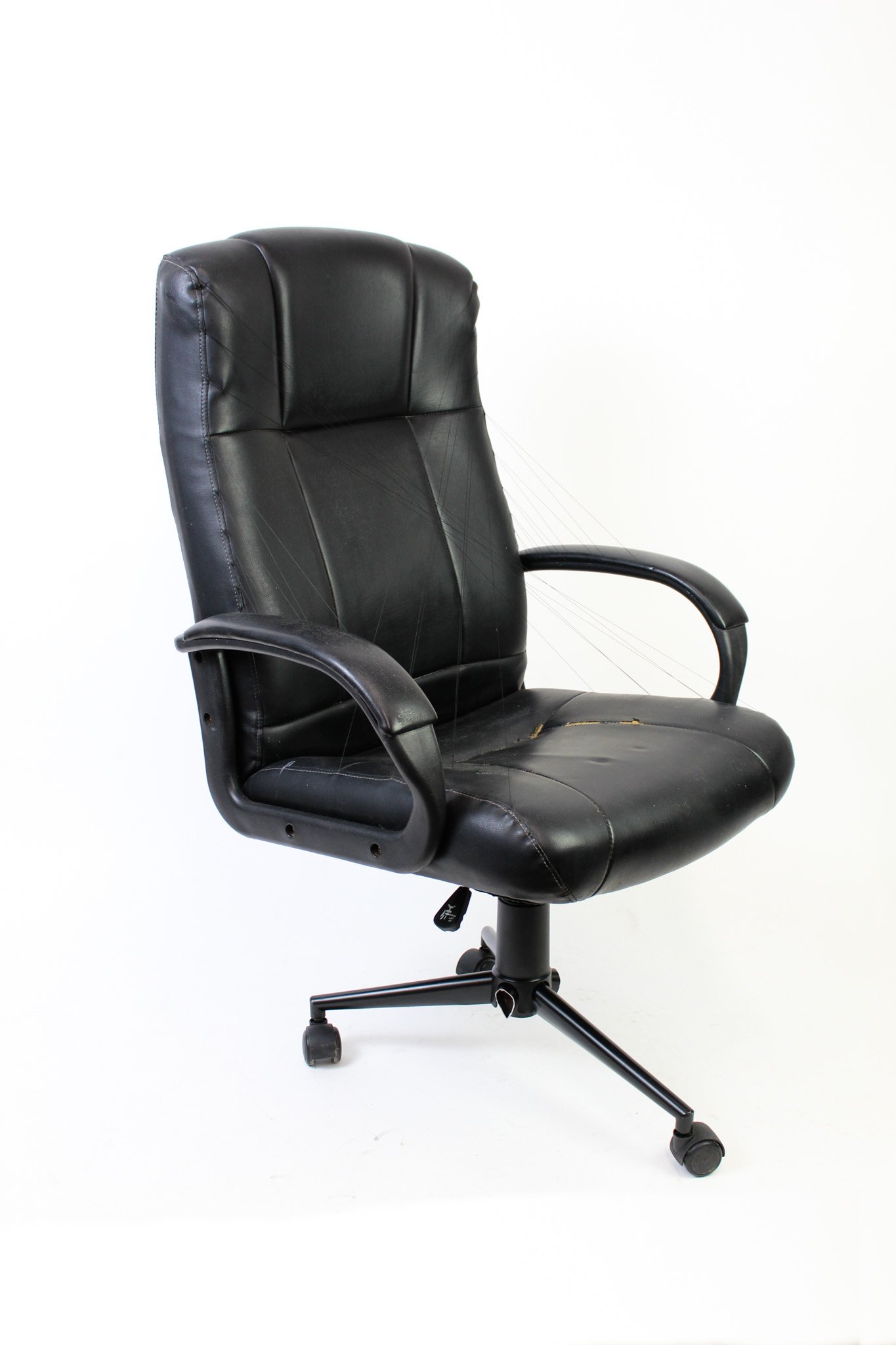
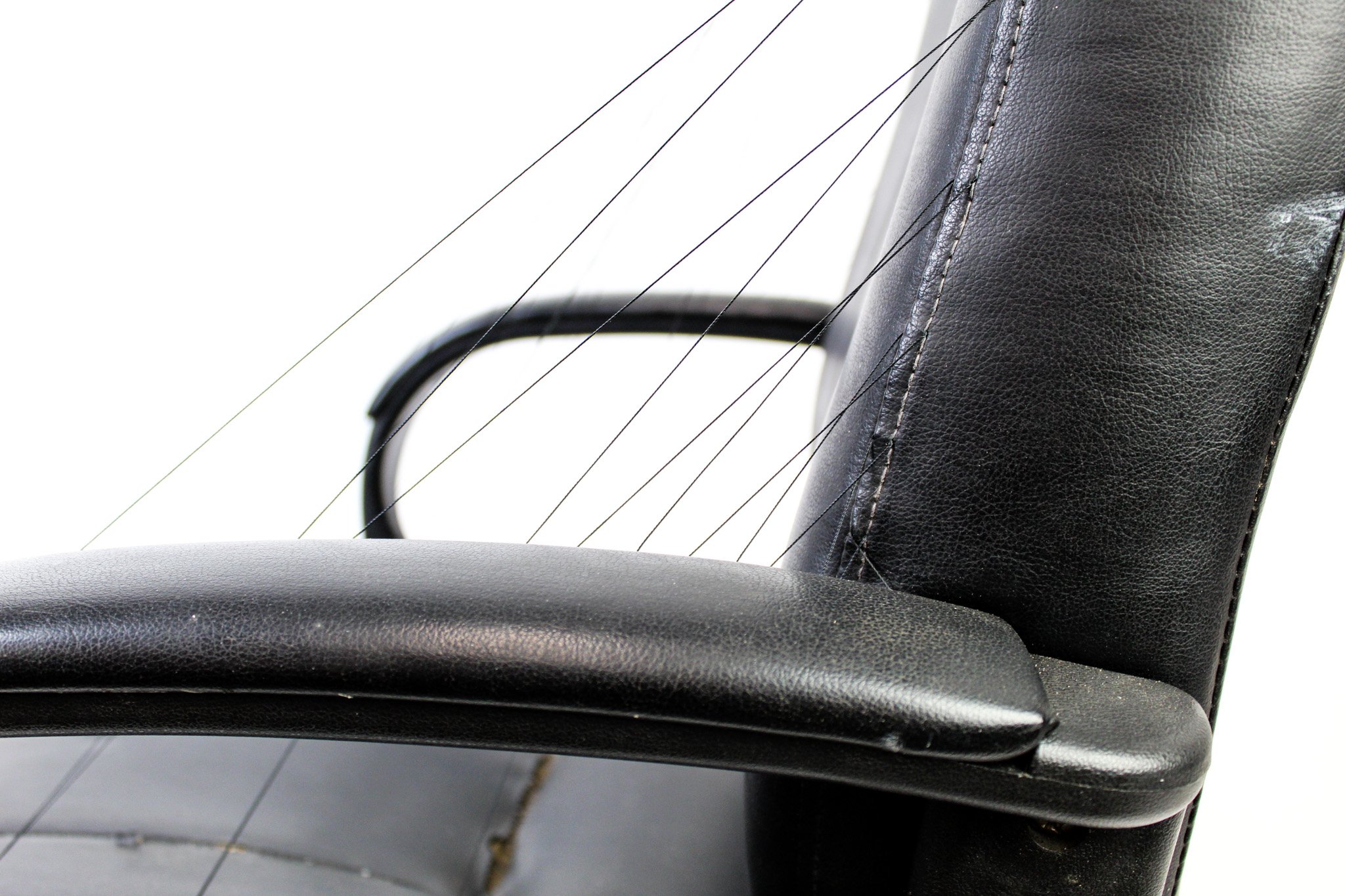
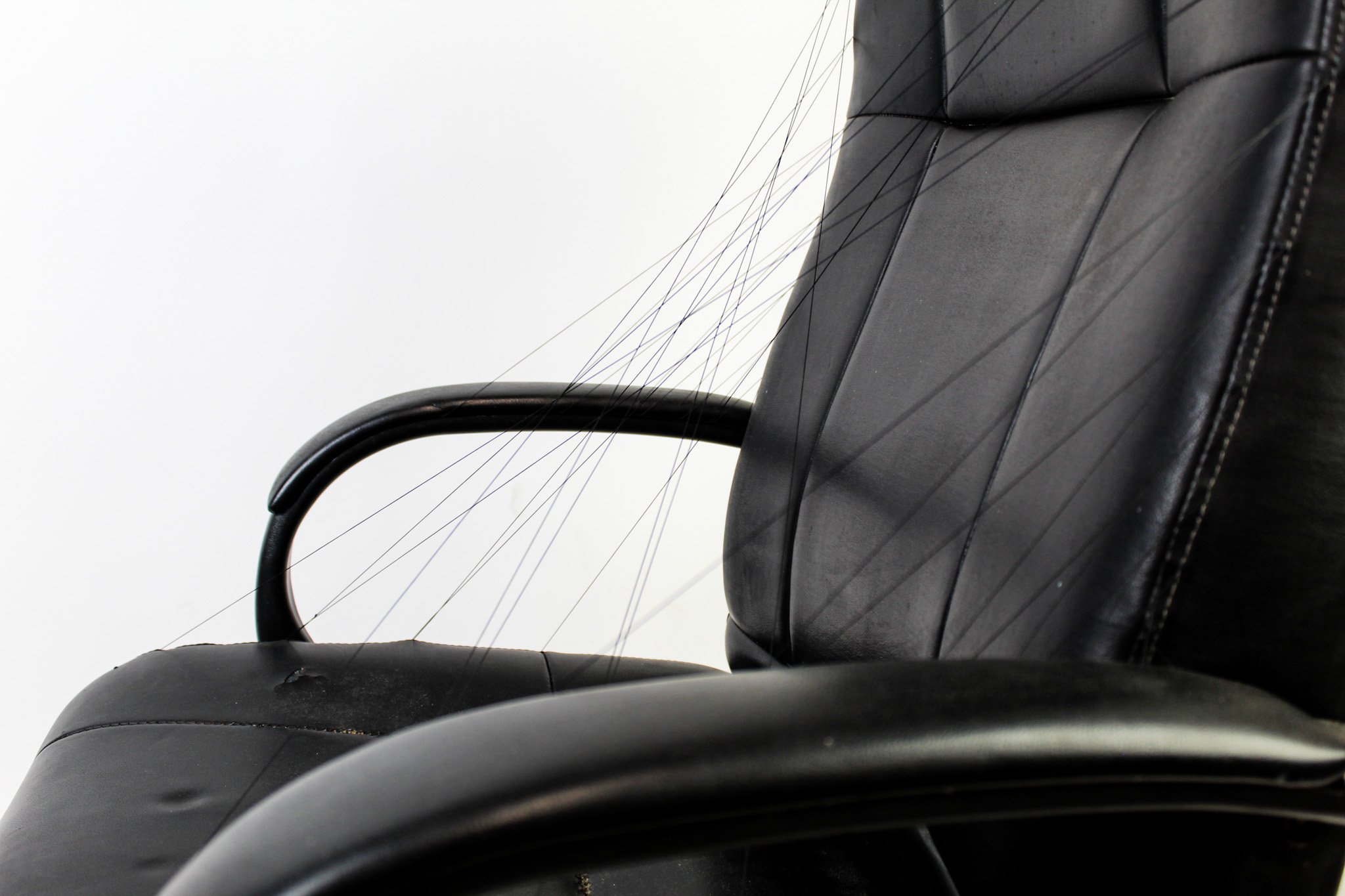

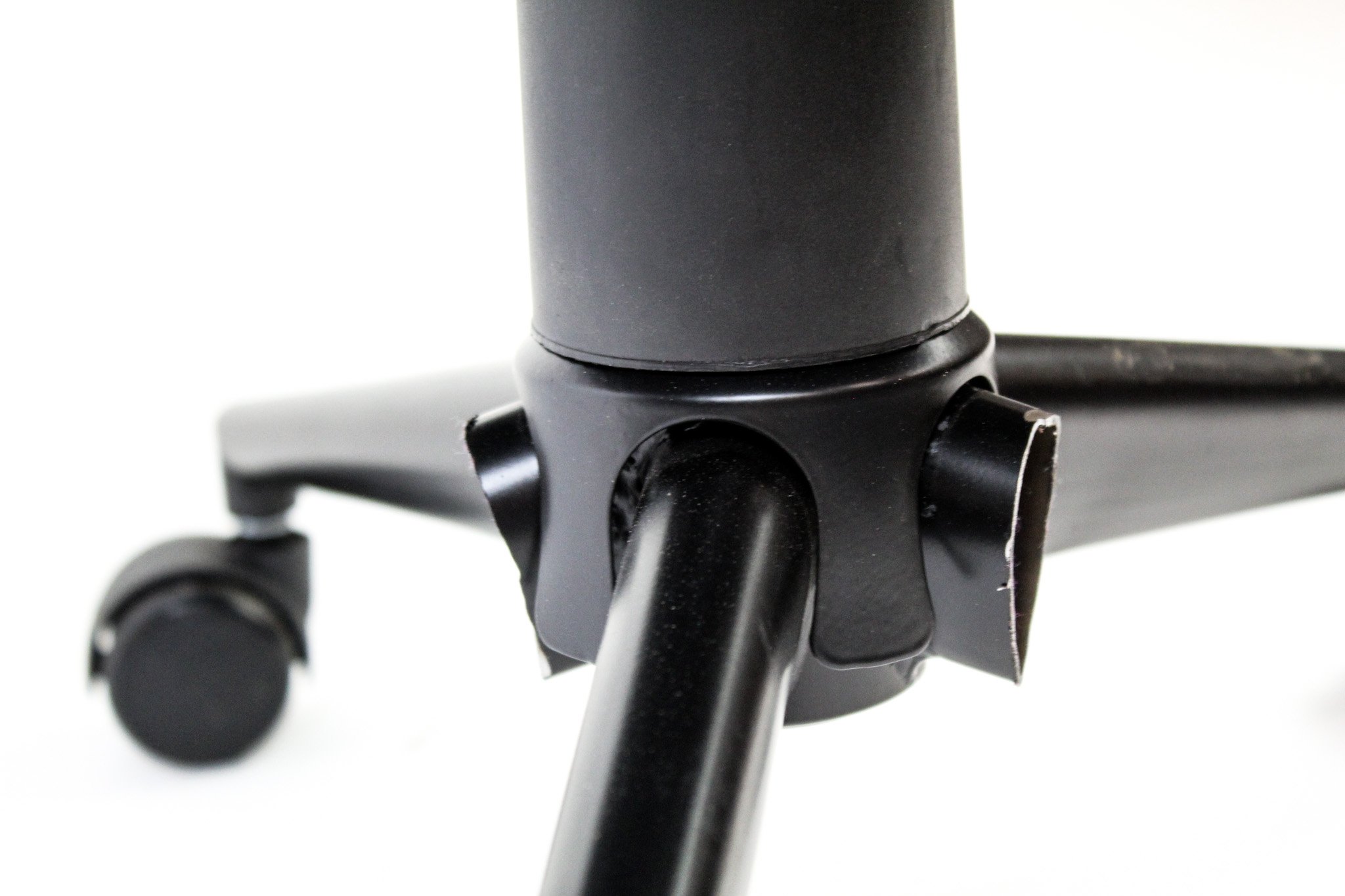













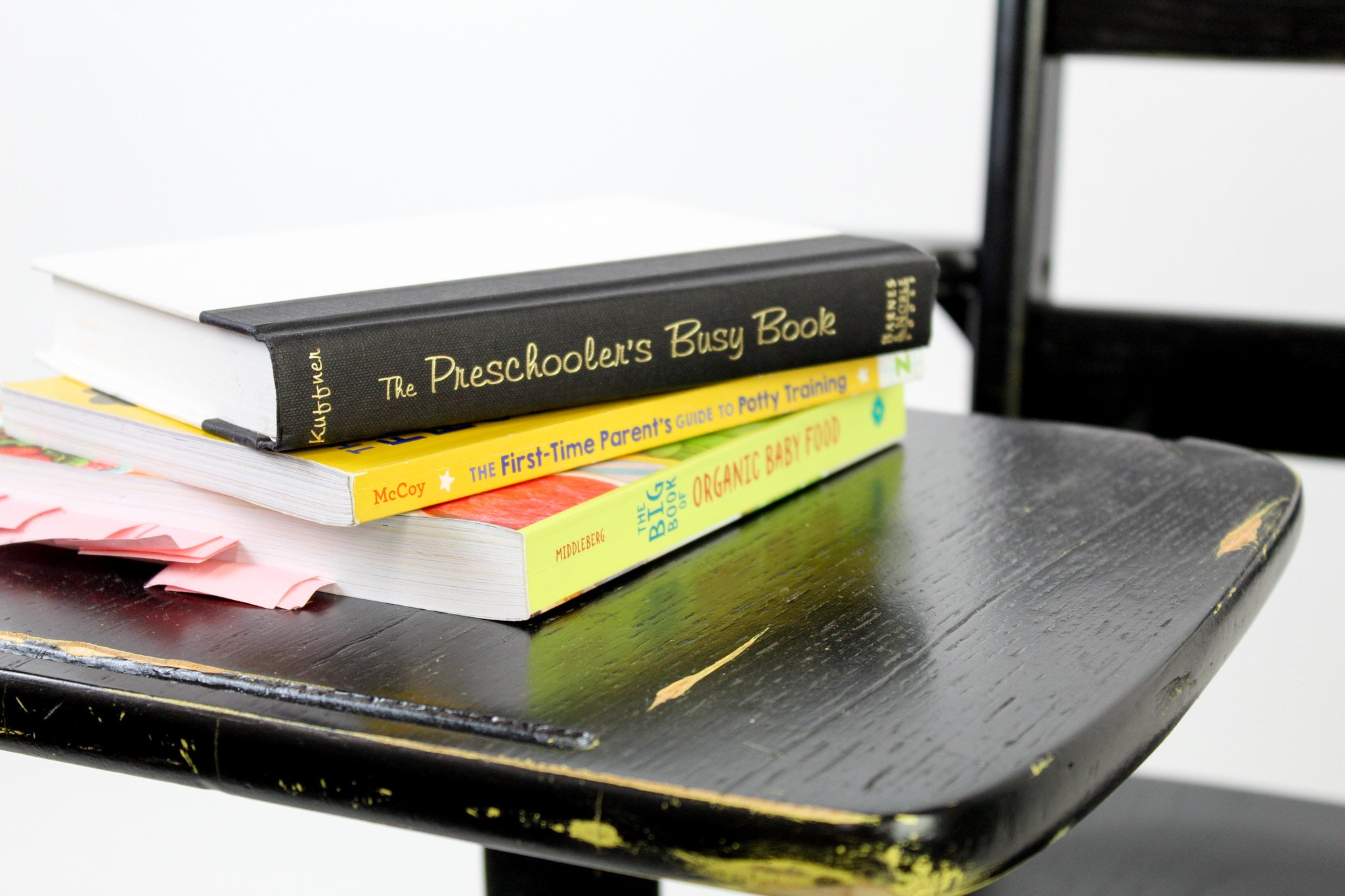







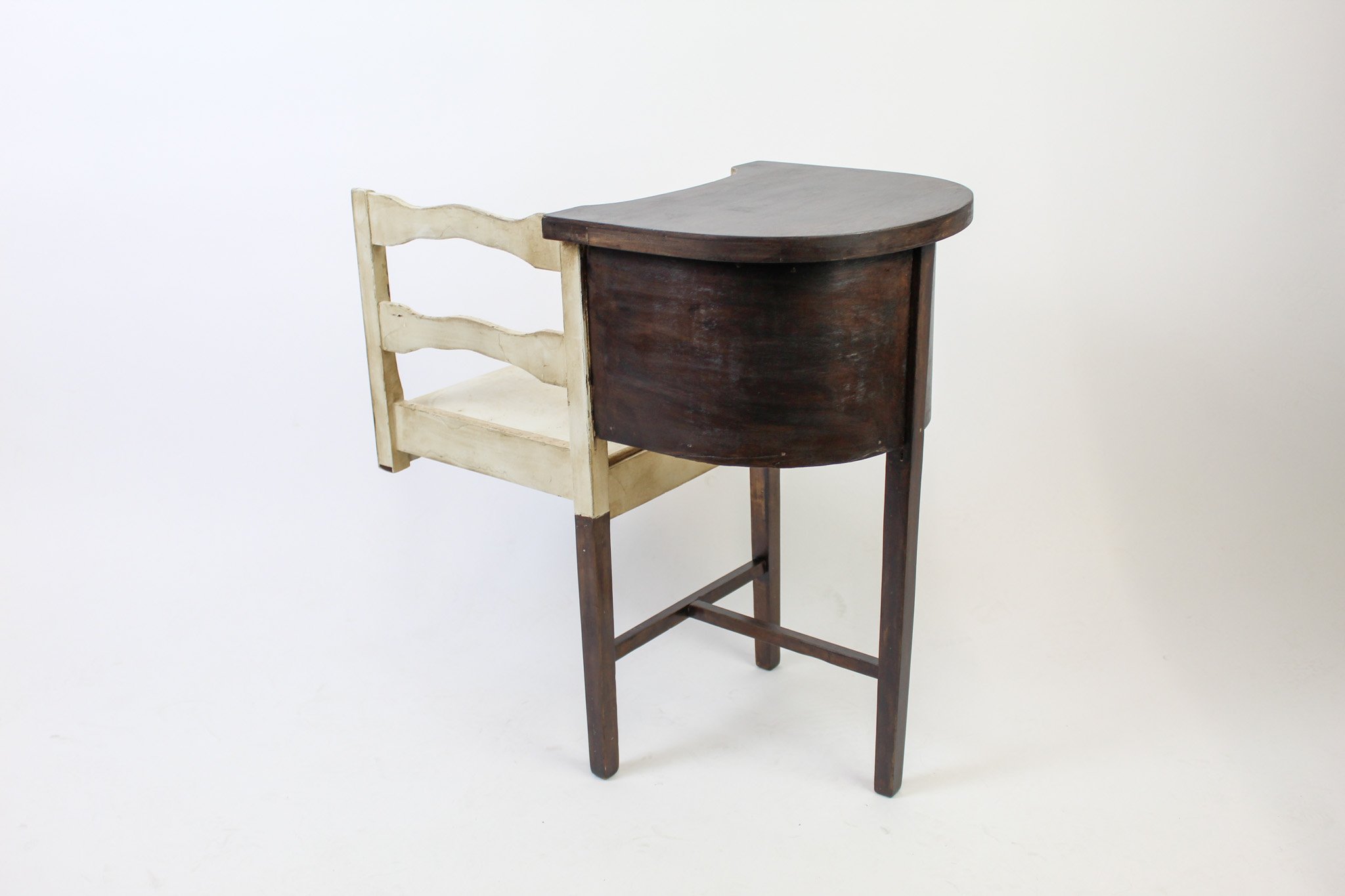



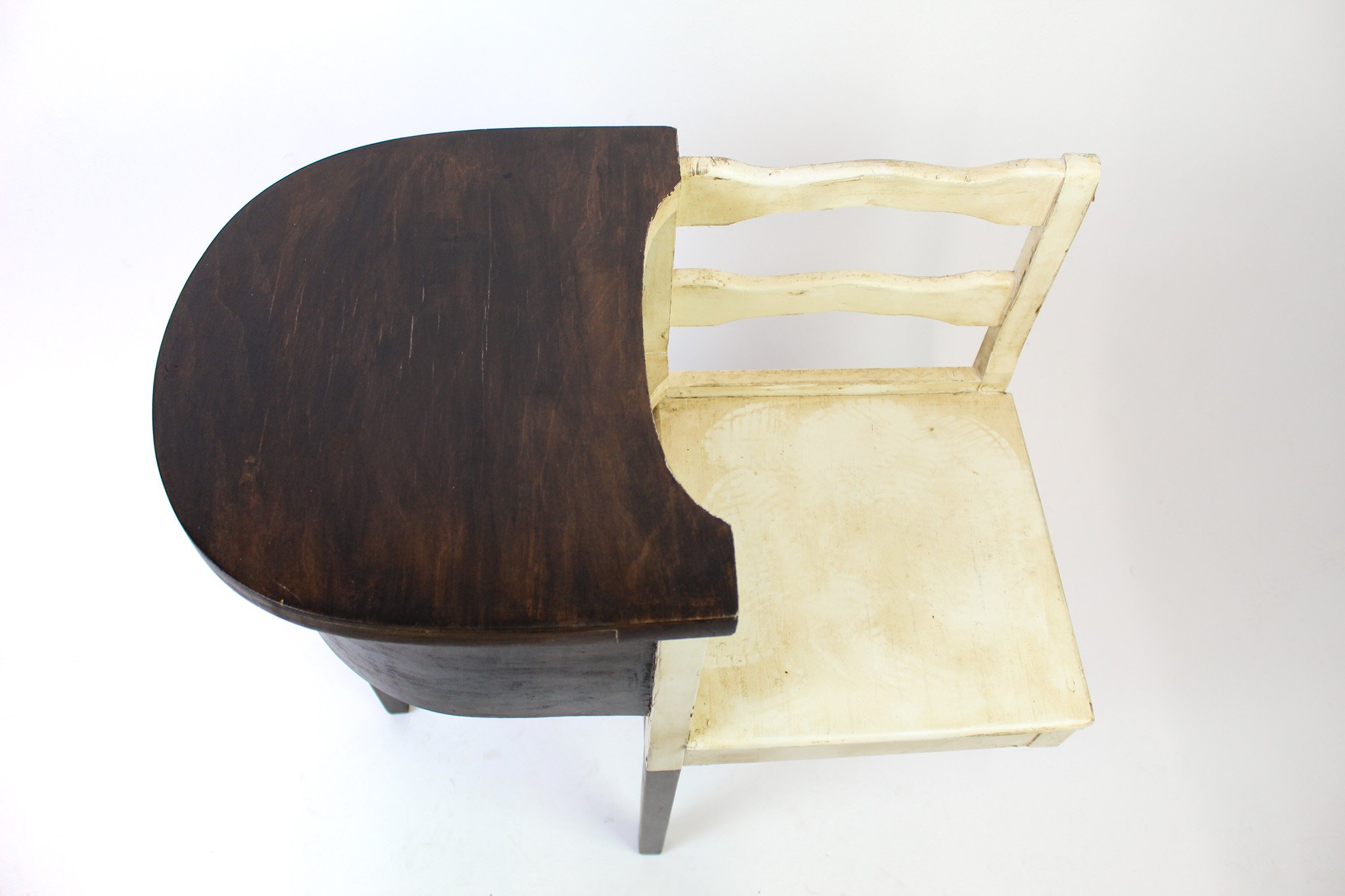



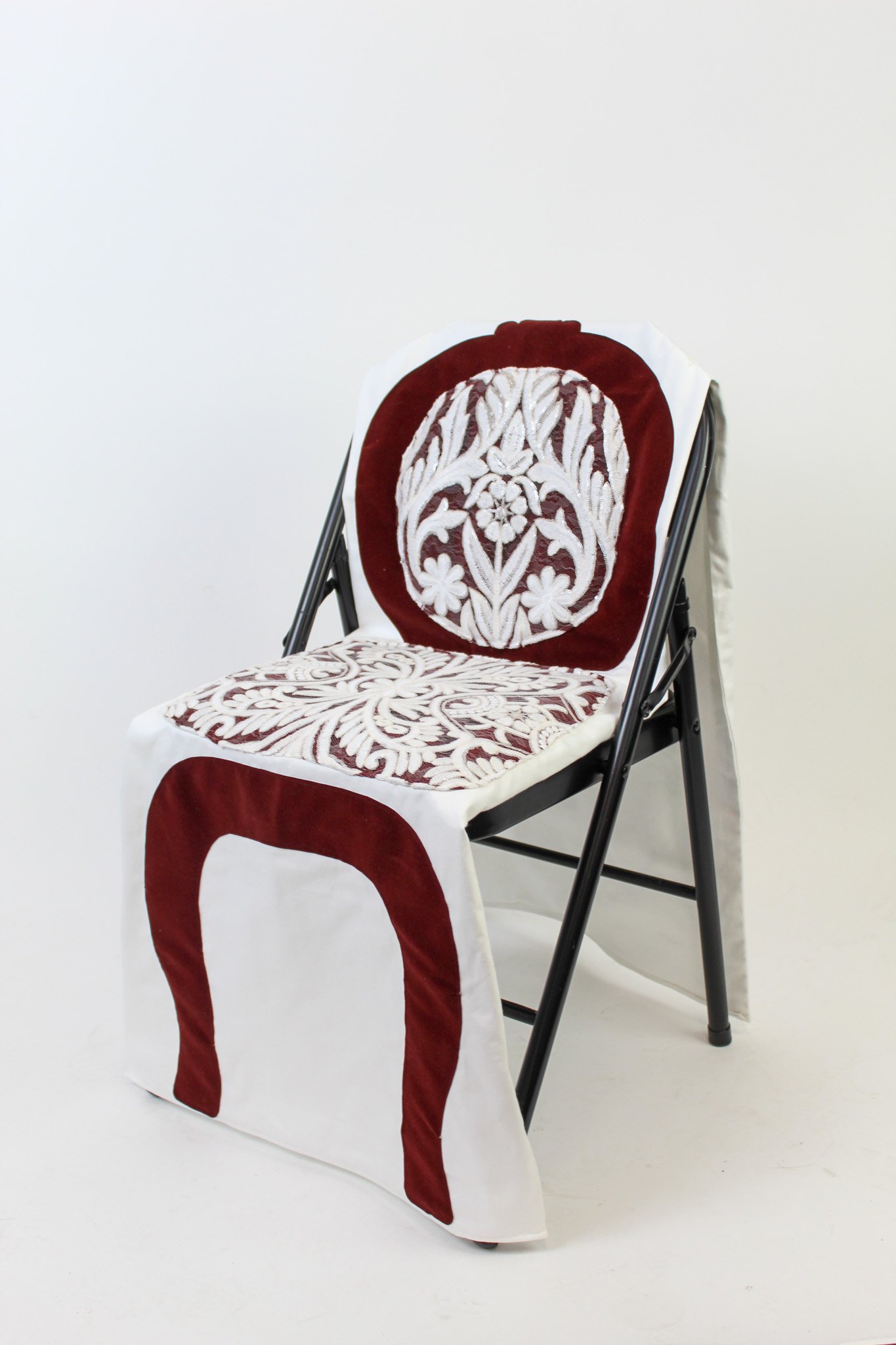




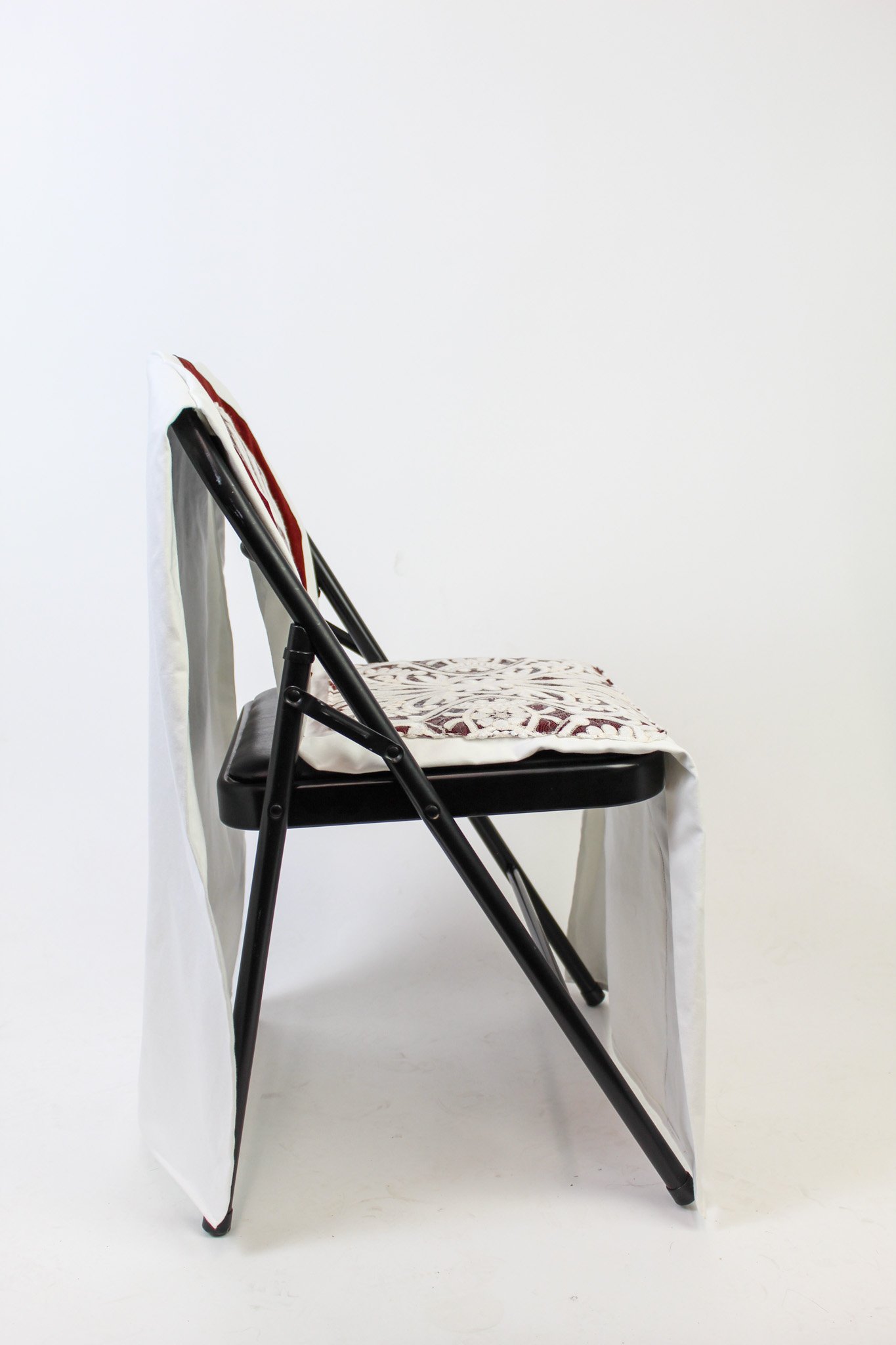



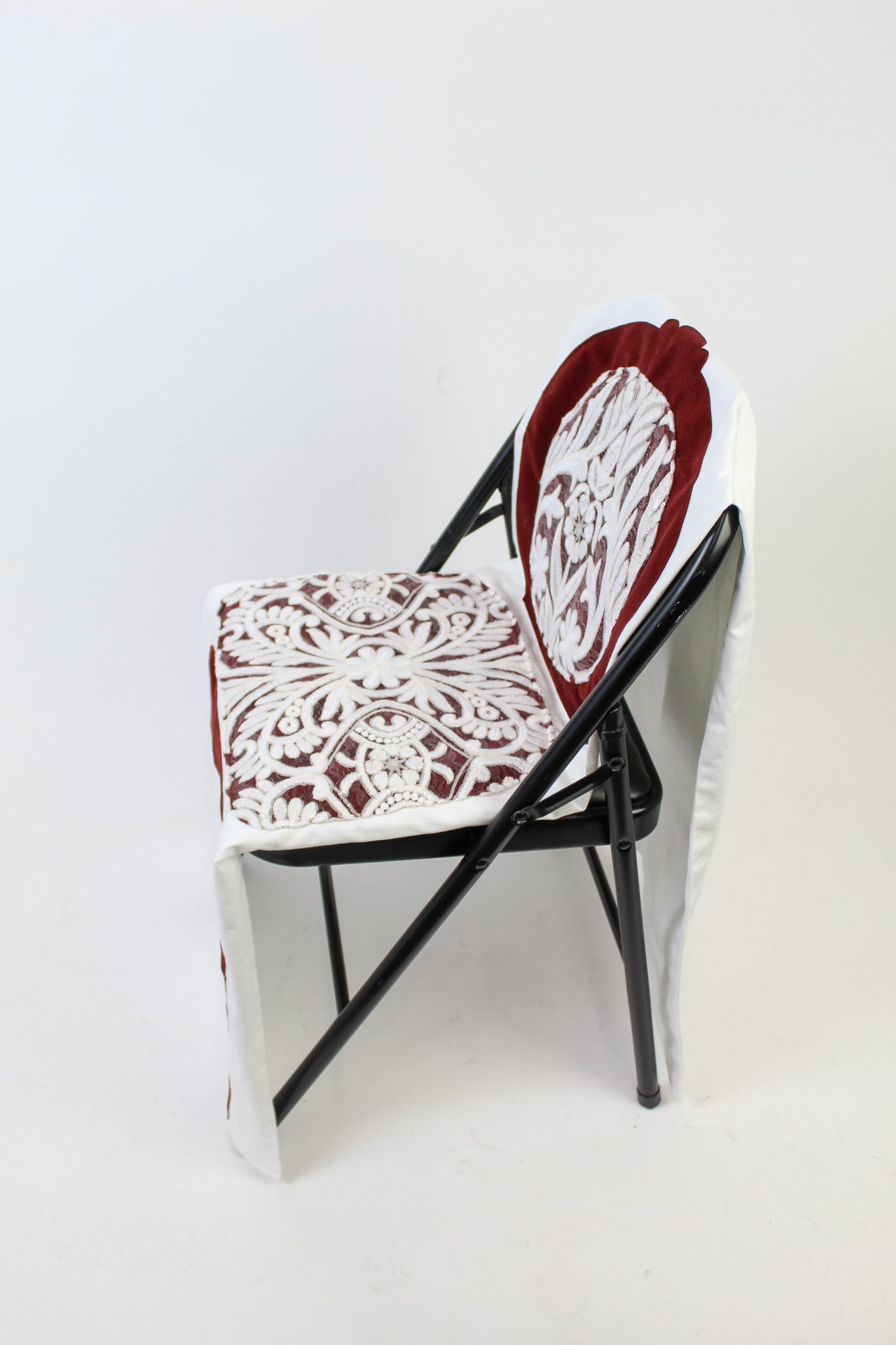

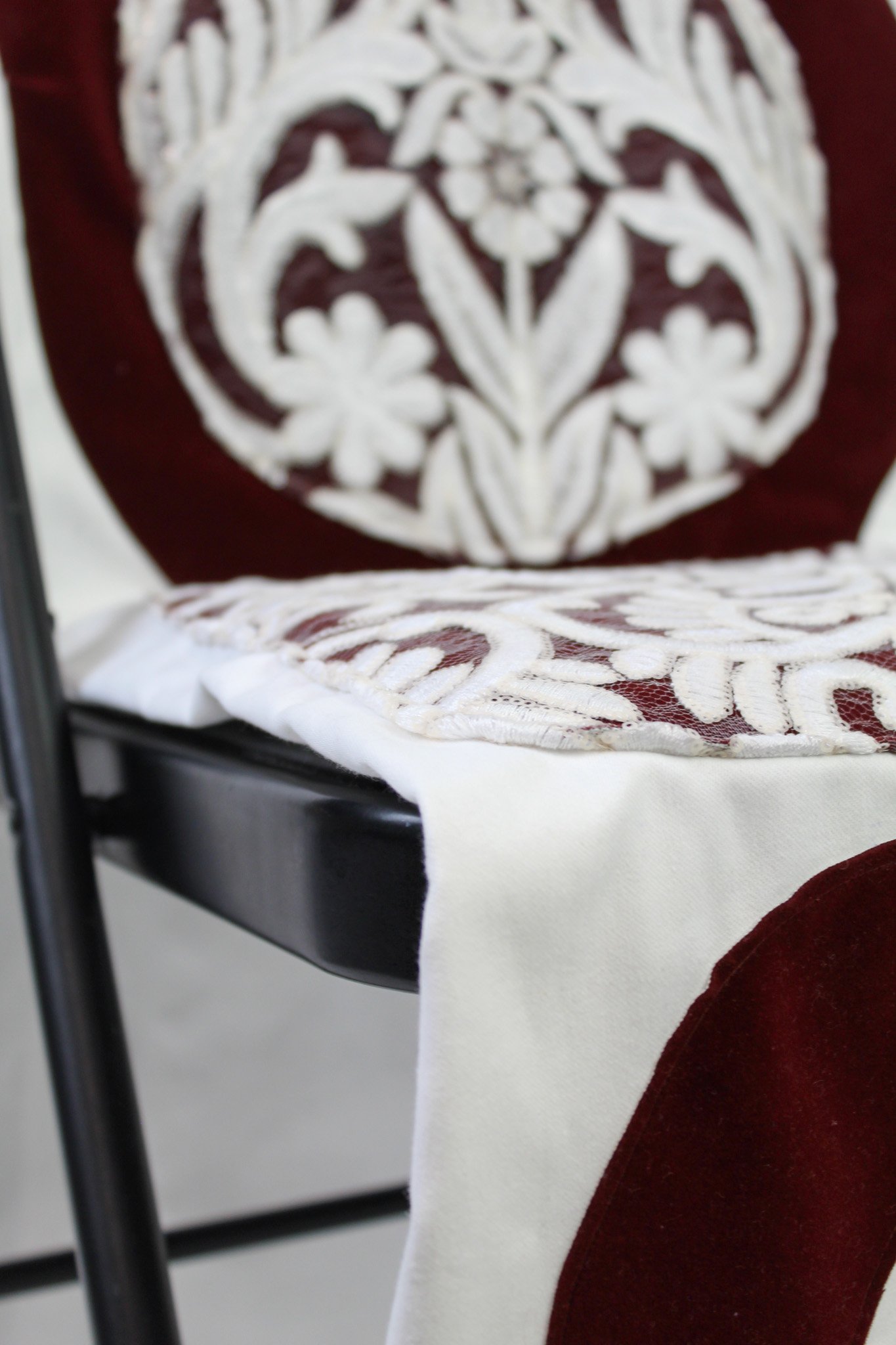
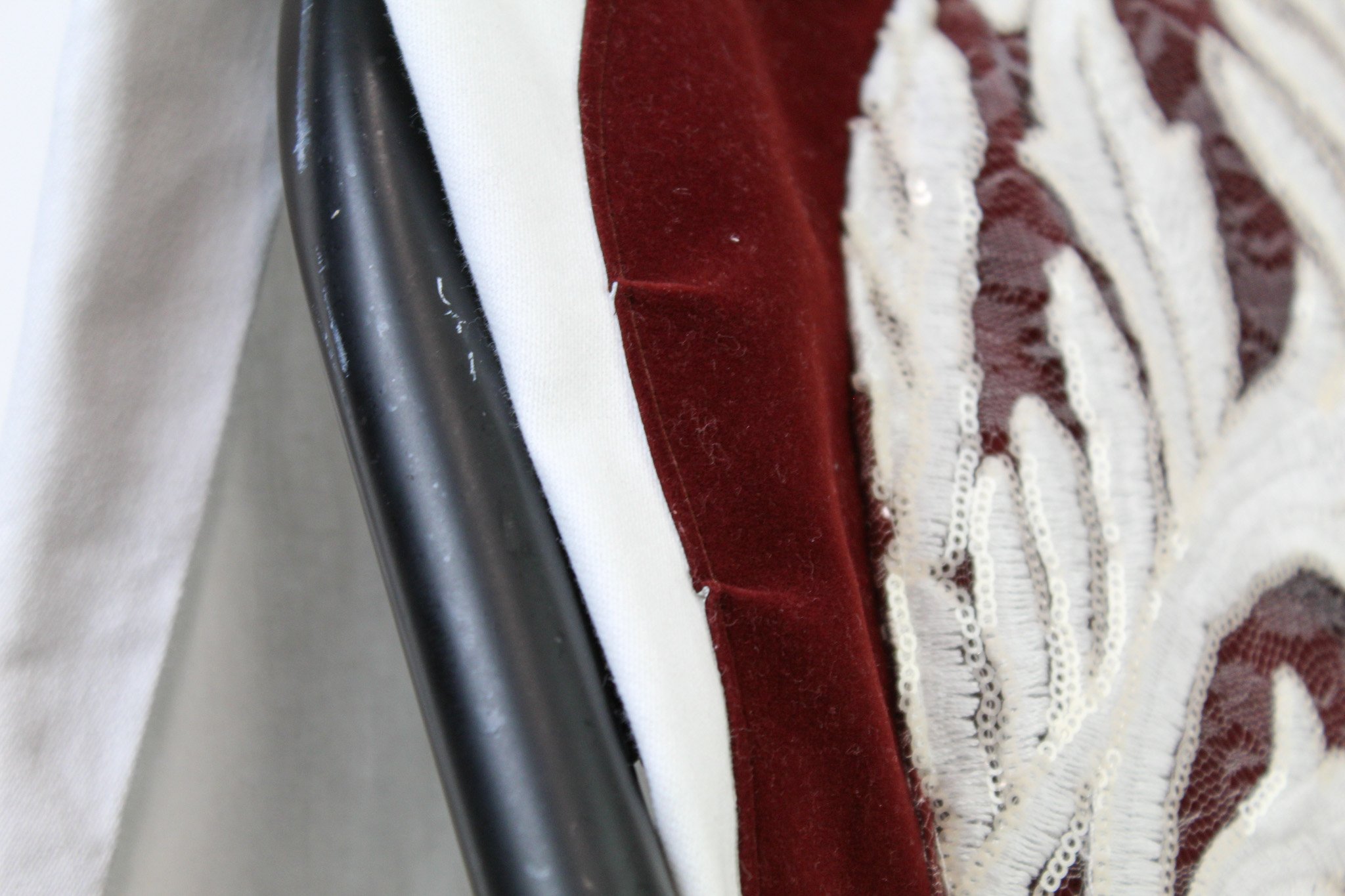
Wire Sculptures
These wire sculptures depict separate, challenging aspects of motherhood: a crying child alone, a mother with her head in her hands, and a concerned mother with an upset child. These scenes, uncommon in typical visual narratives, challenge the perfect, "Instagram-worthy" portrayal of motherhood. Created with interconnected lines, the sculptures convey a sense of unity, reflecting shared struggles of motherhood like guilt, anger, and isolation. Moreover, they highlight the importance of supporting mothers through increased connection and understanding within their communities.



Dryer Sheet Sculptures
Despite being connected through similar struggles, various mothering groups still experience feelings of isolation, loneliness, and silence. In my dryer sheet sculptures, I aimed to depict a time when mothers feel physically isolated, focusing on infant feeding. The sculptures portray a Stay-at-Home mother breastfeeding, a Working Mother pumping, and a Student Mother bottle feeding. Motherhood, particularly during feeding times, can be intensely isolating as mothers are often unable to multitask. The sculptures, appearing relatively small in a larger frame, underscore this isolation. Each layer is separated by sheets of plexiglass, further emphasizing the distance between them. Despite unique challenges faced by different mothering groups, the shared experience of isolation and silencing unites them.



















